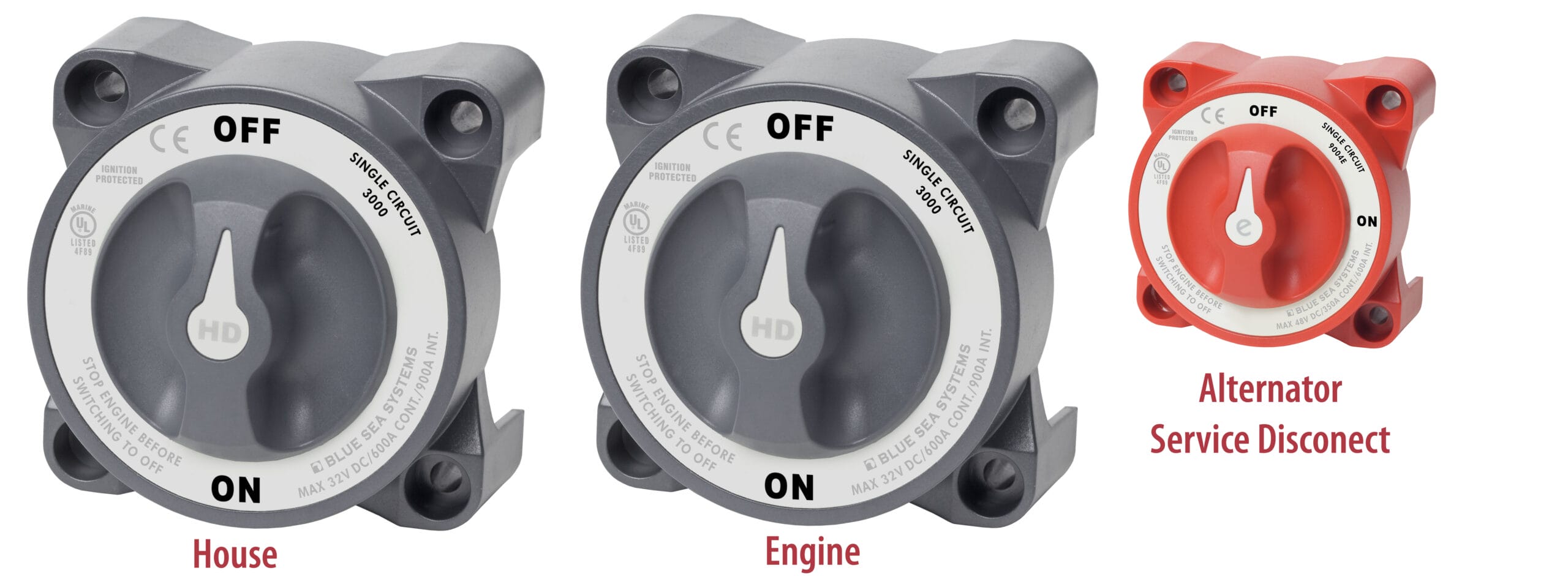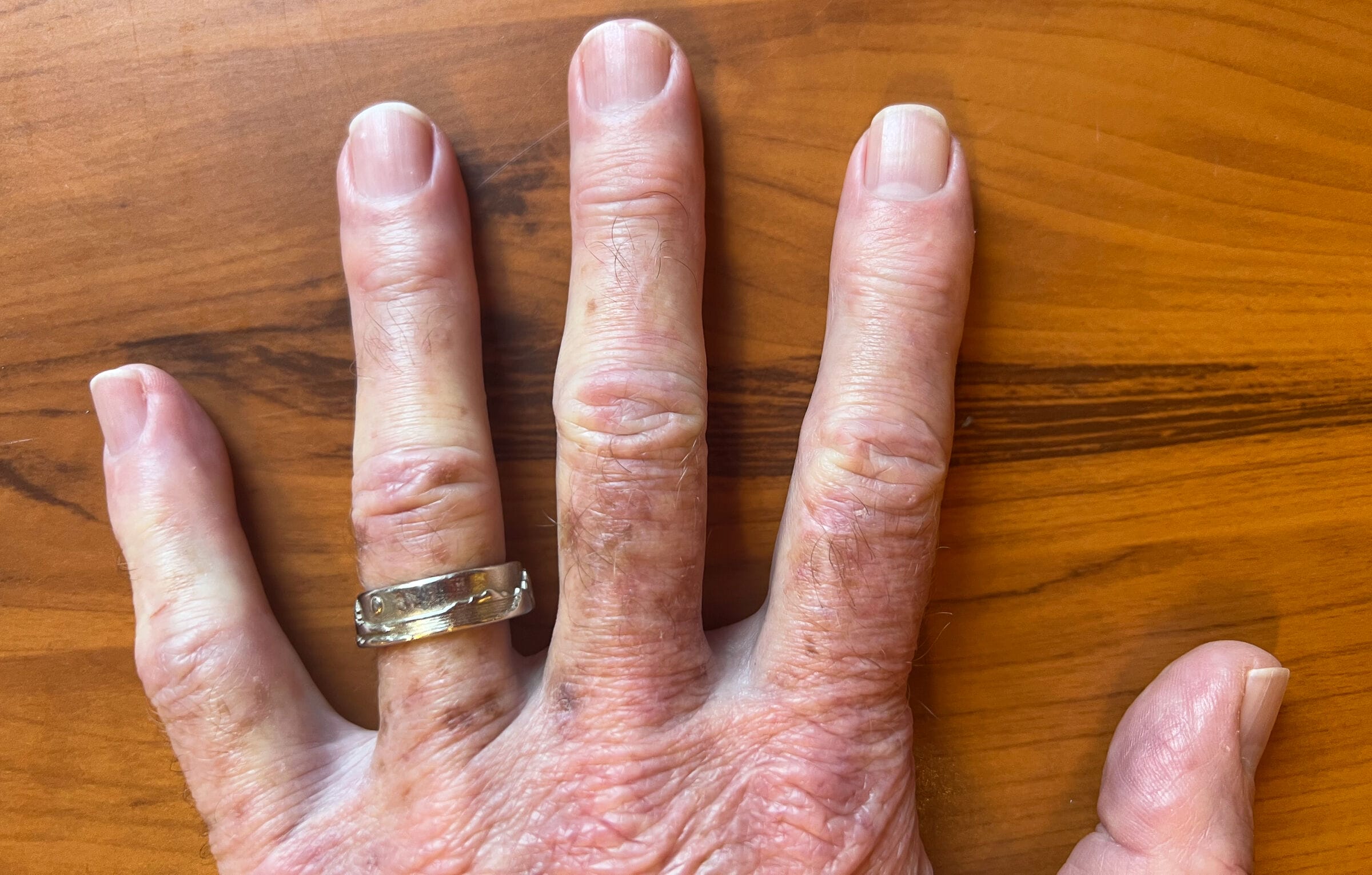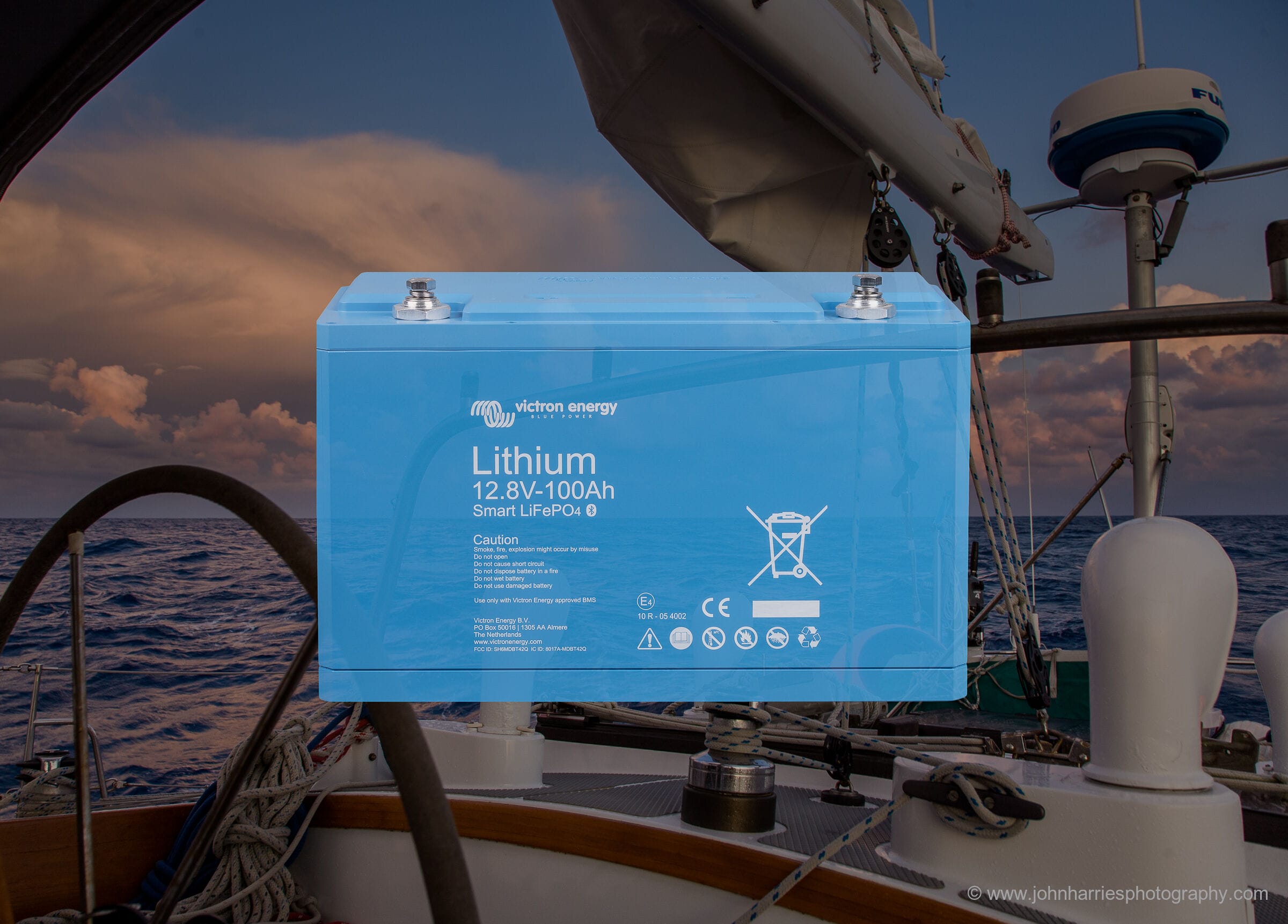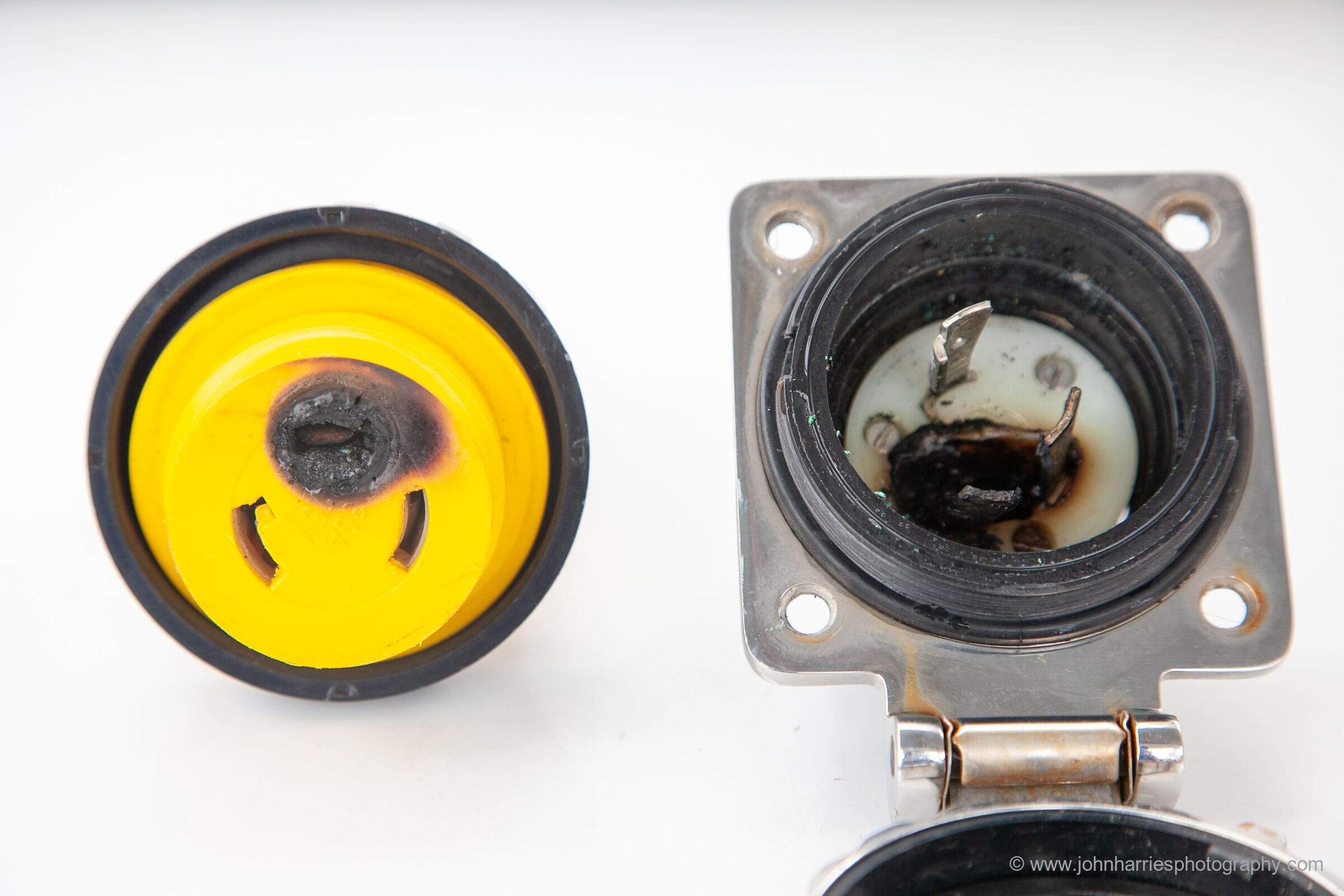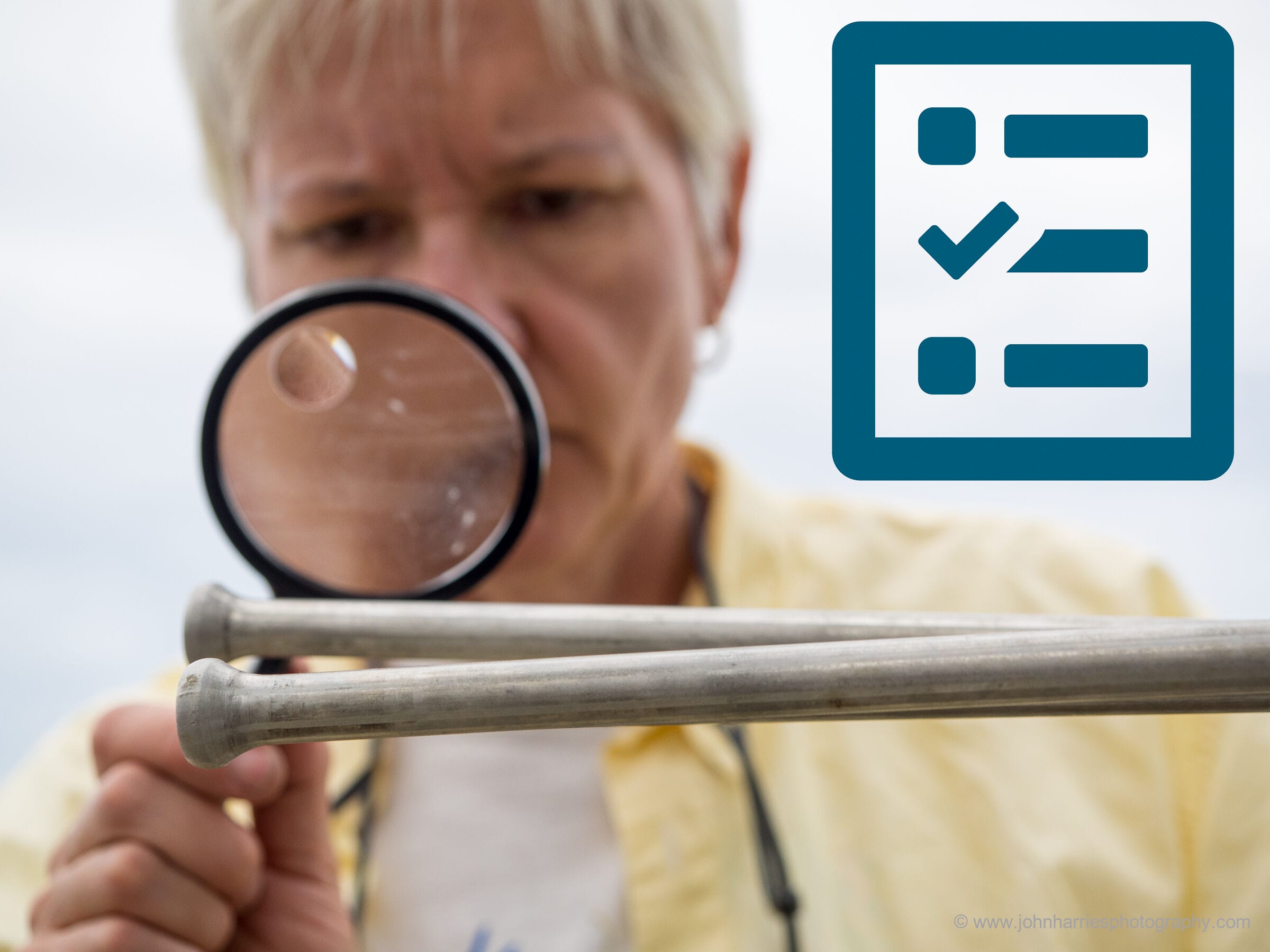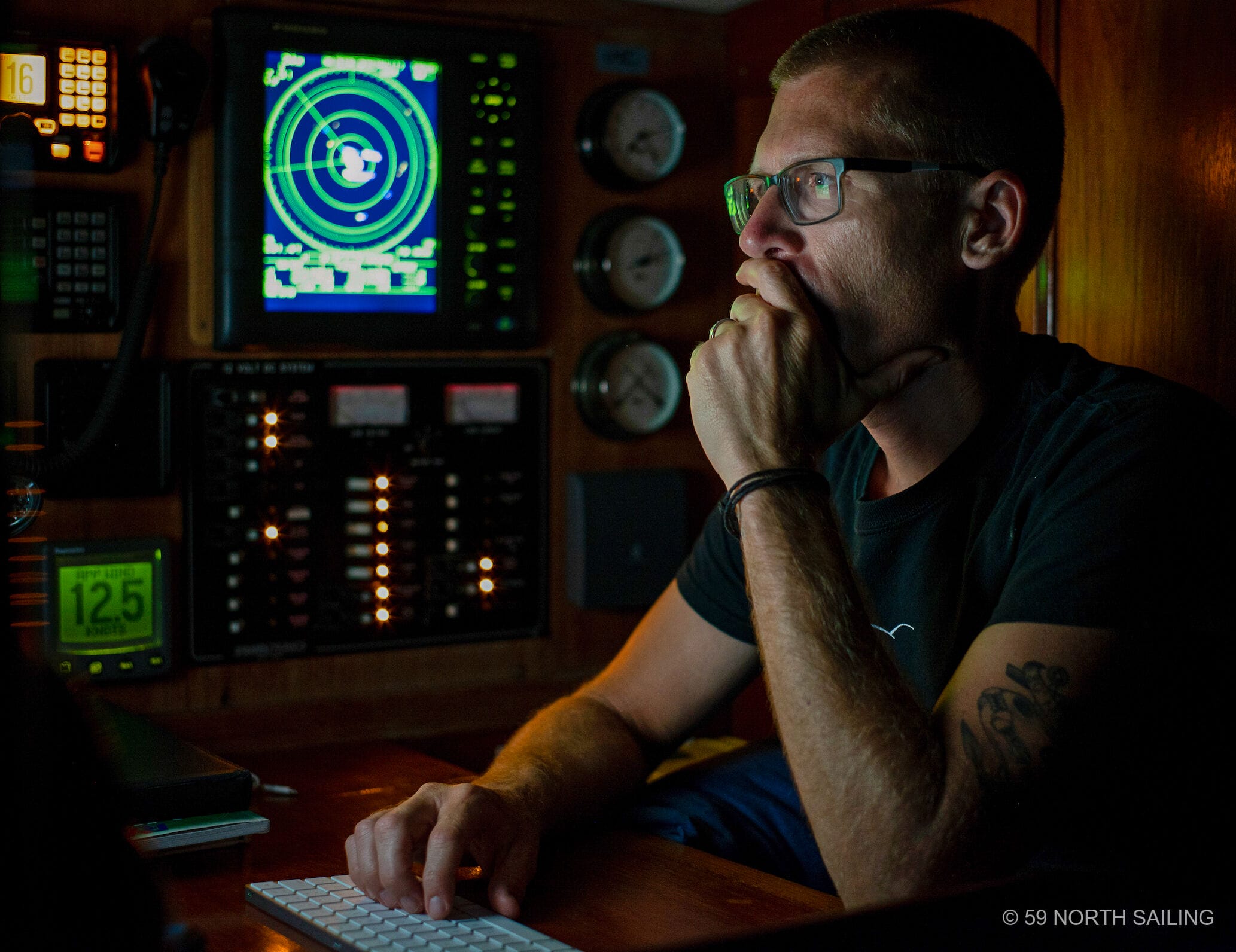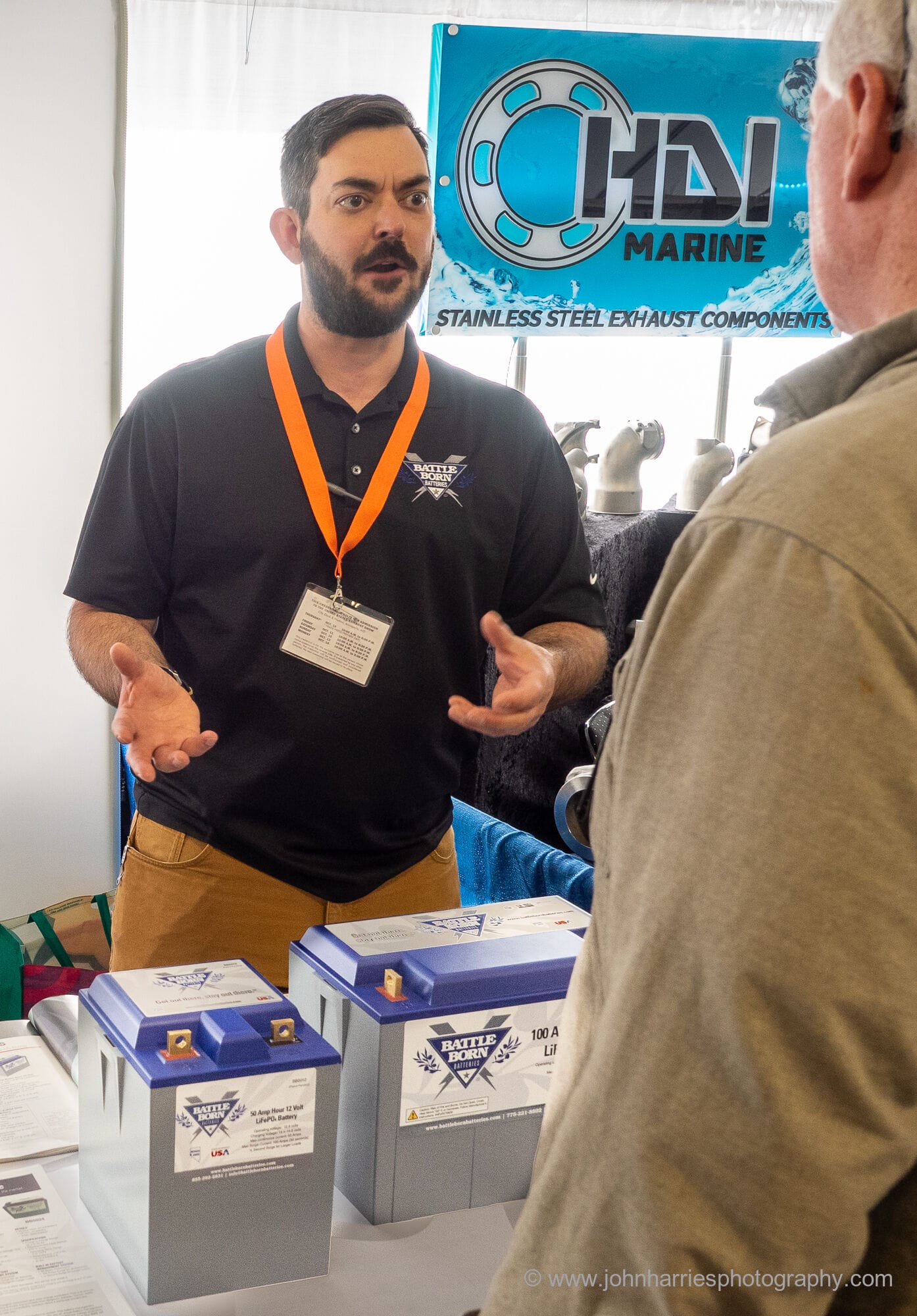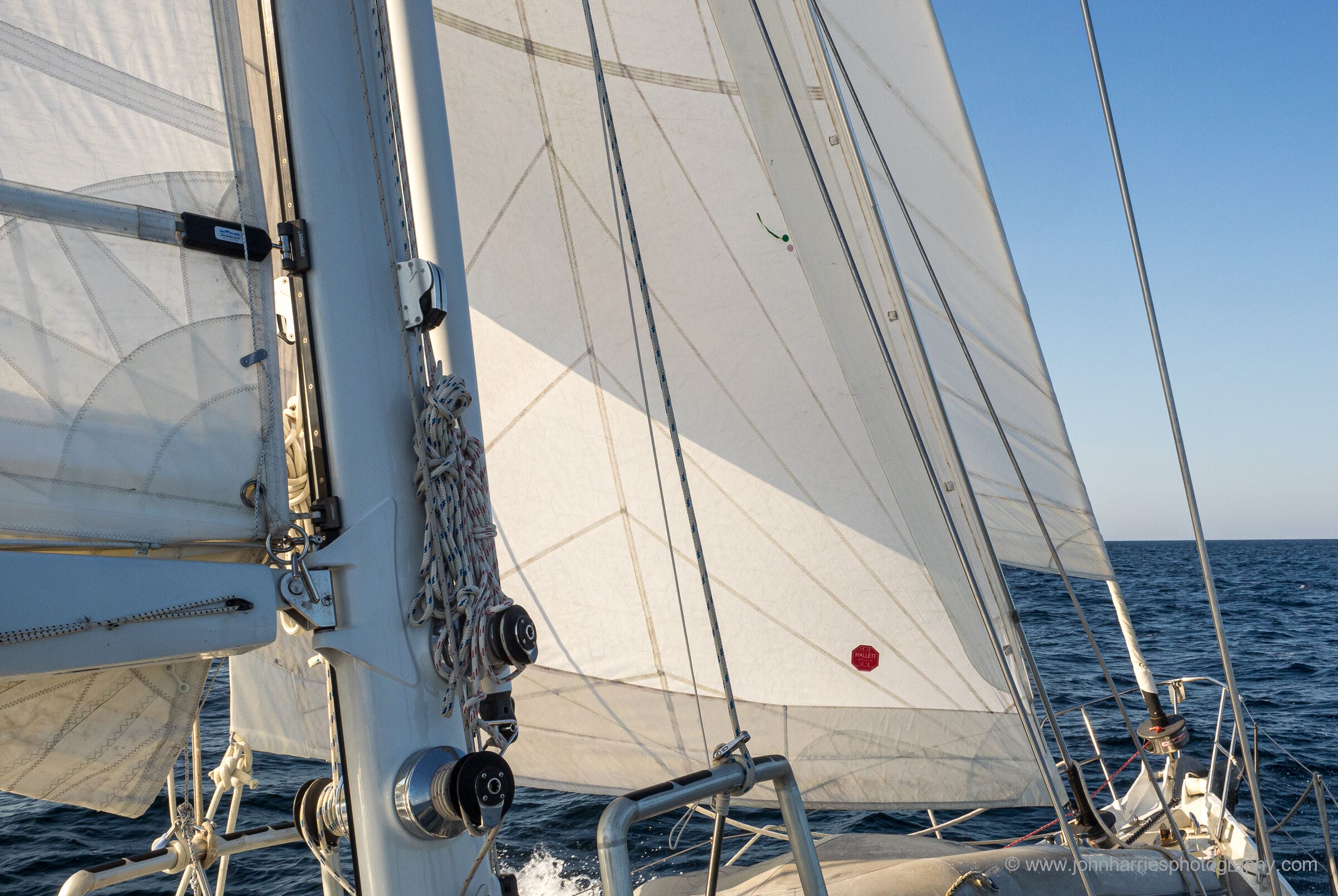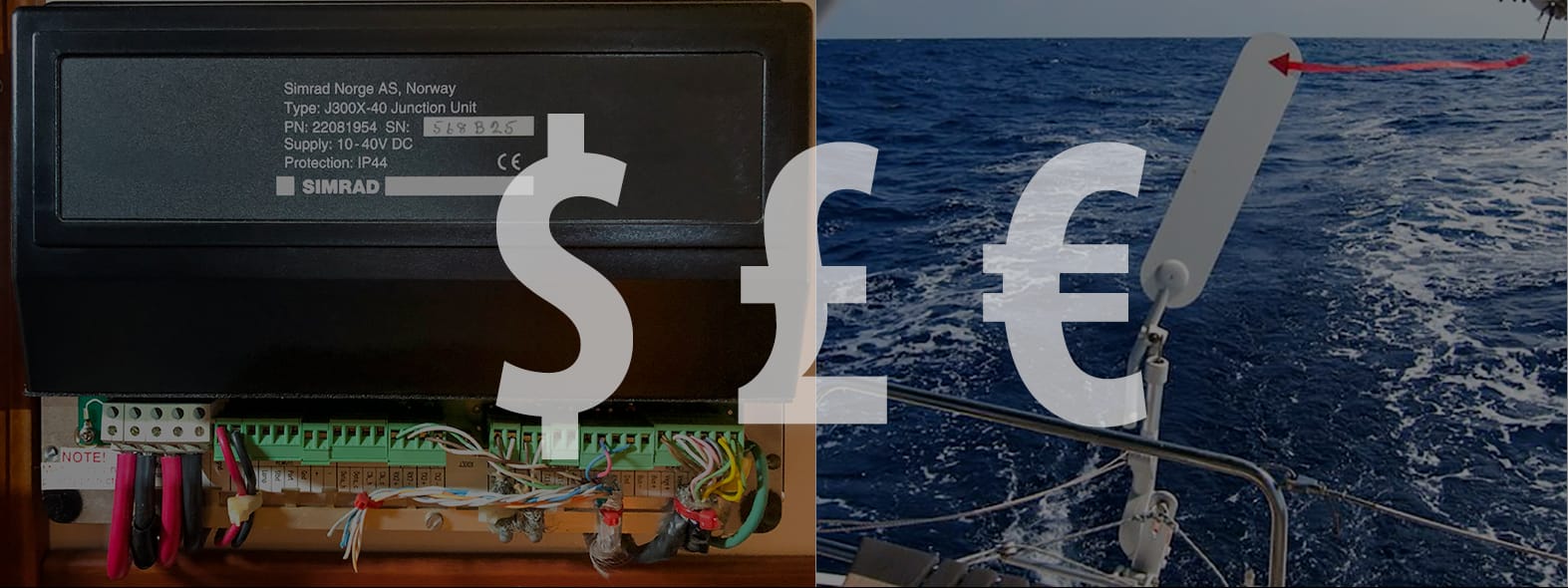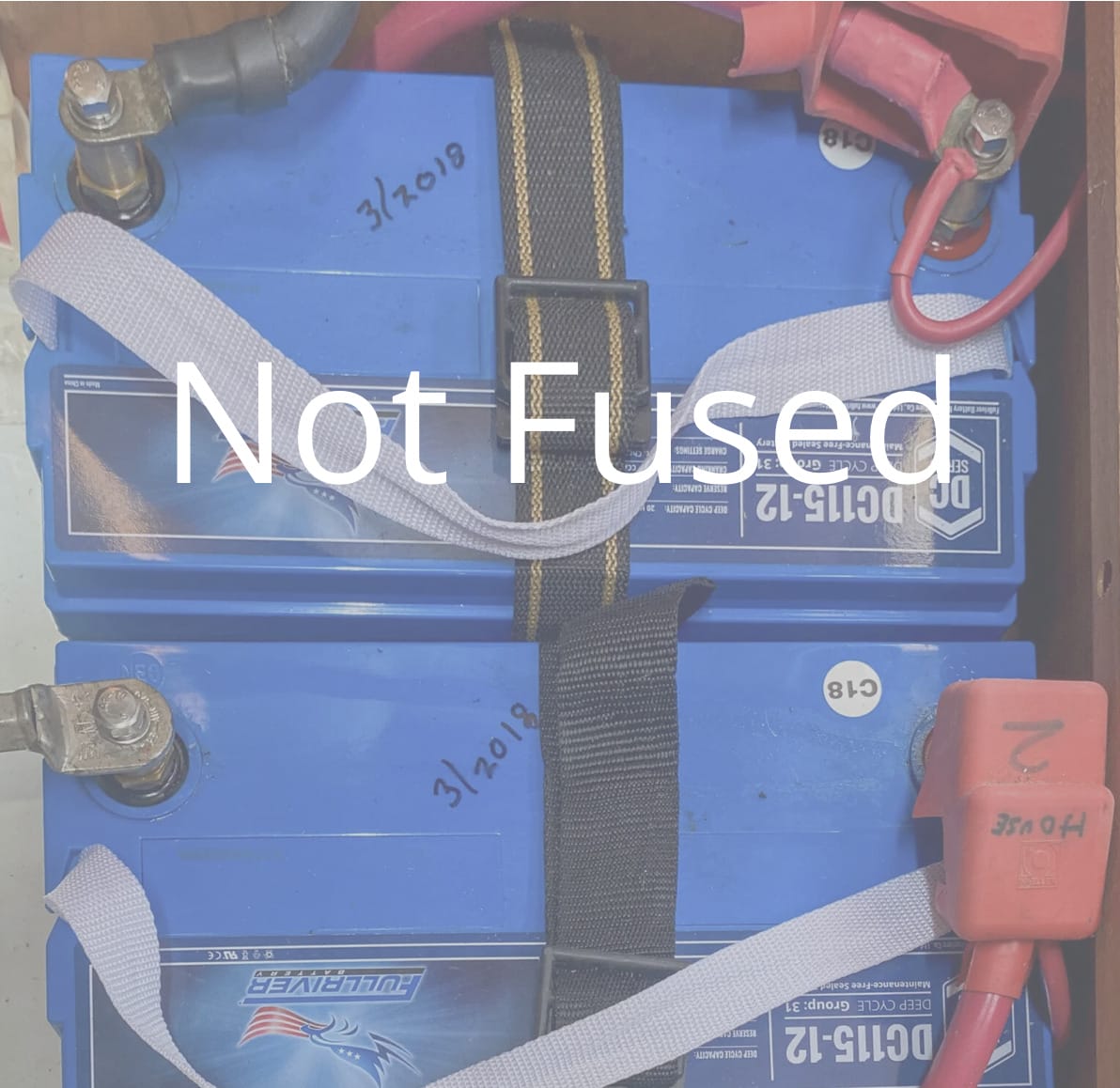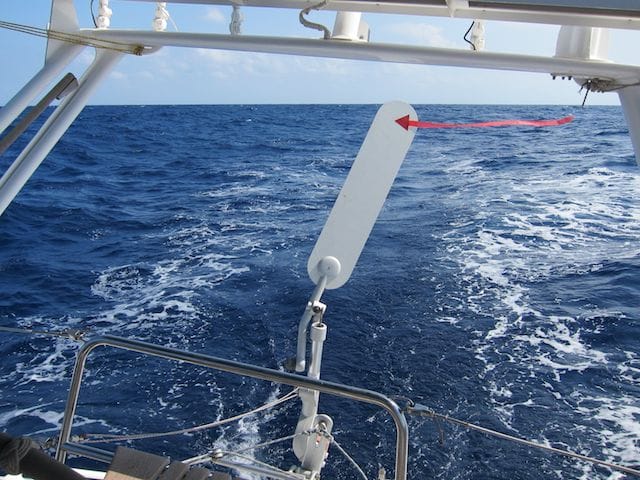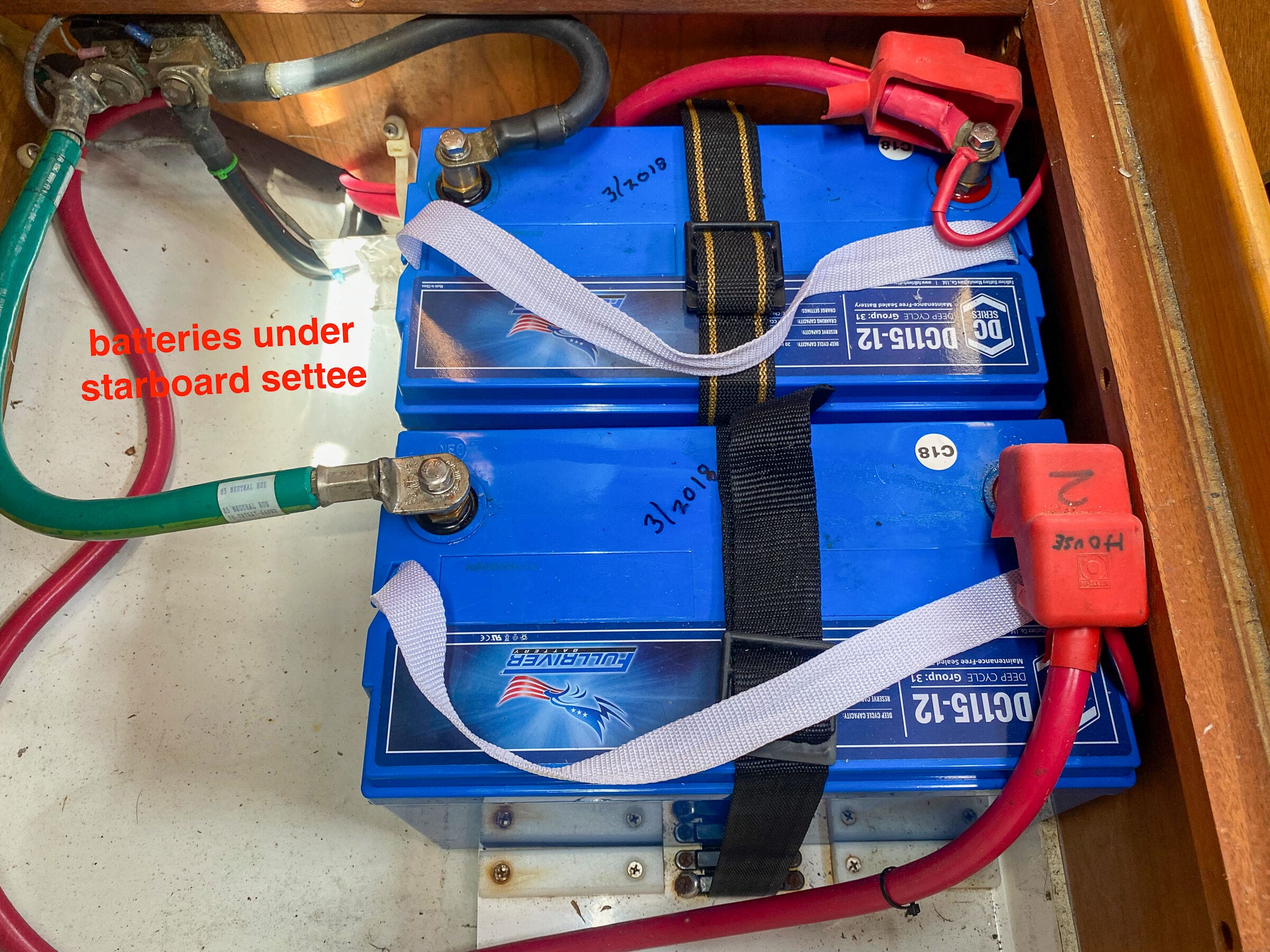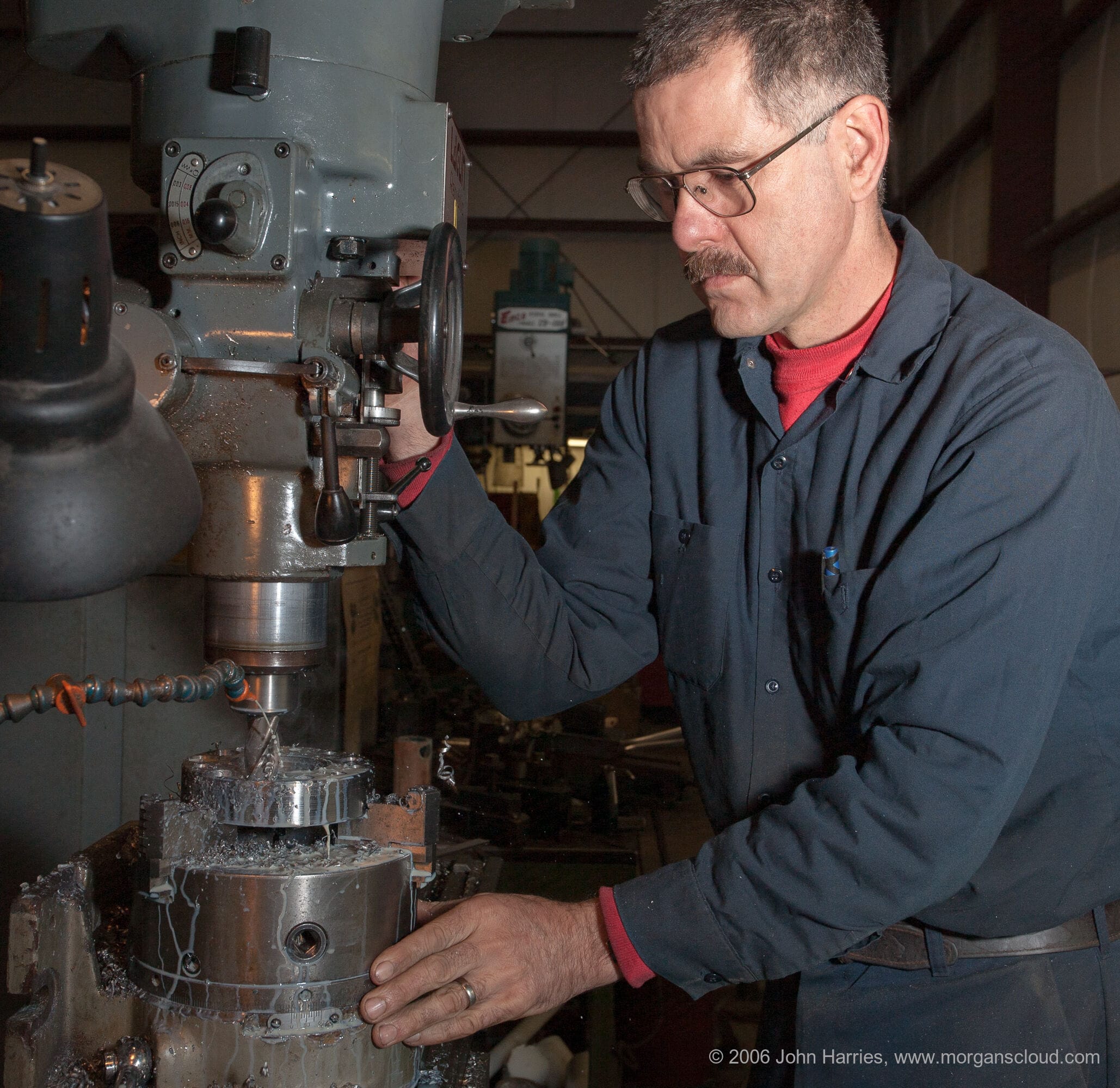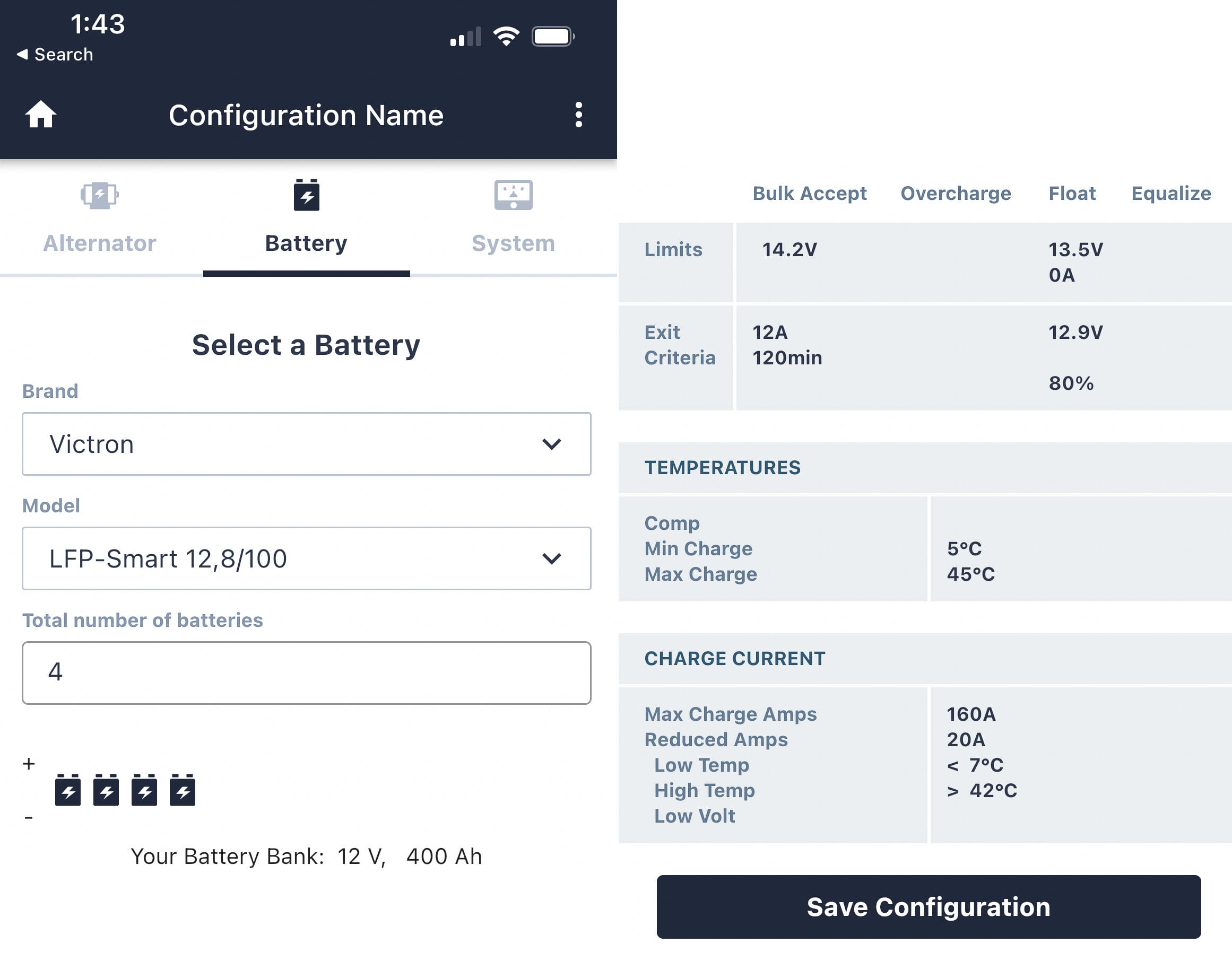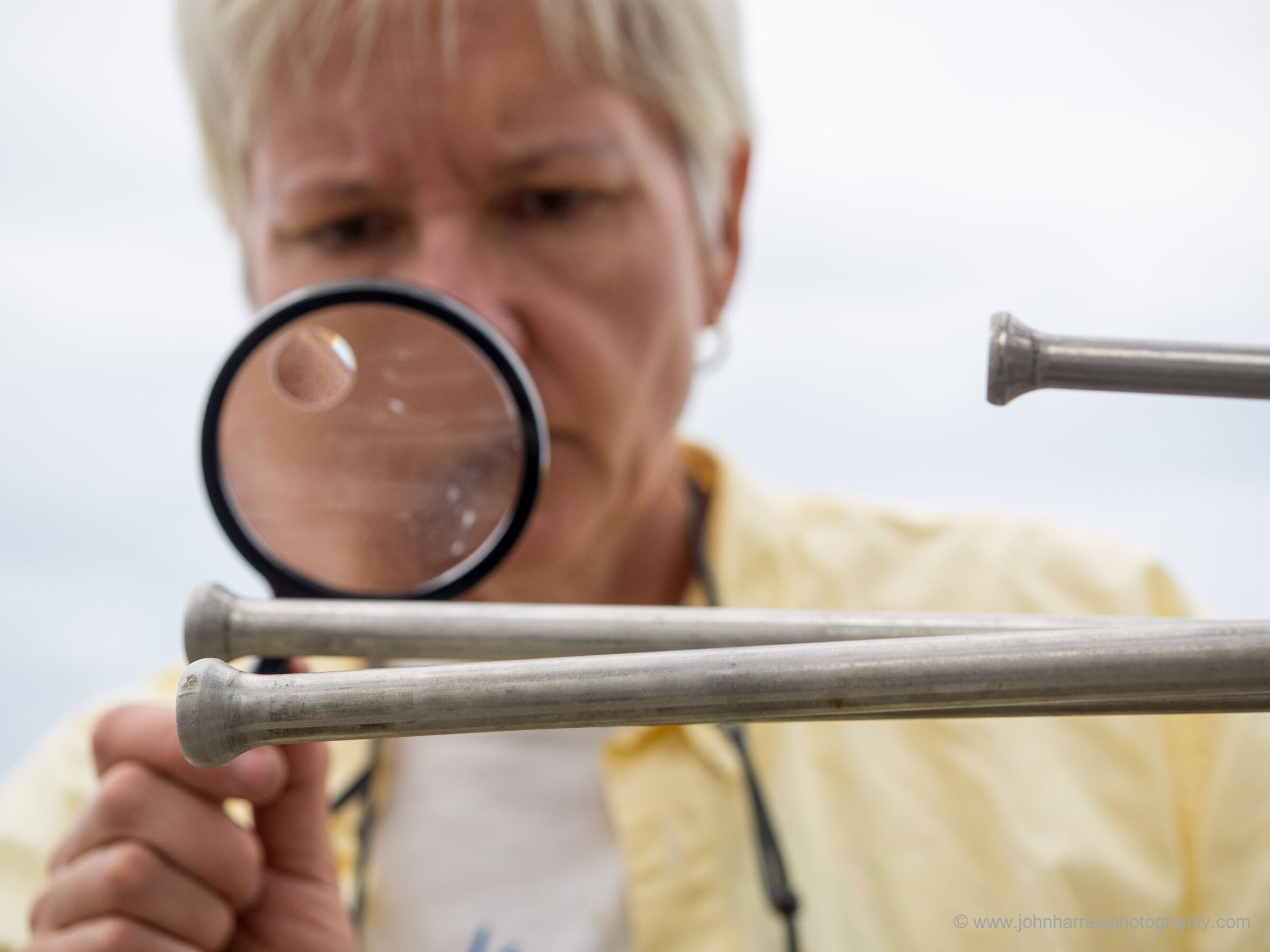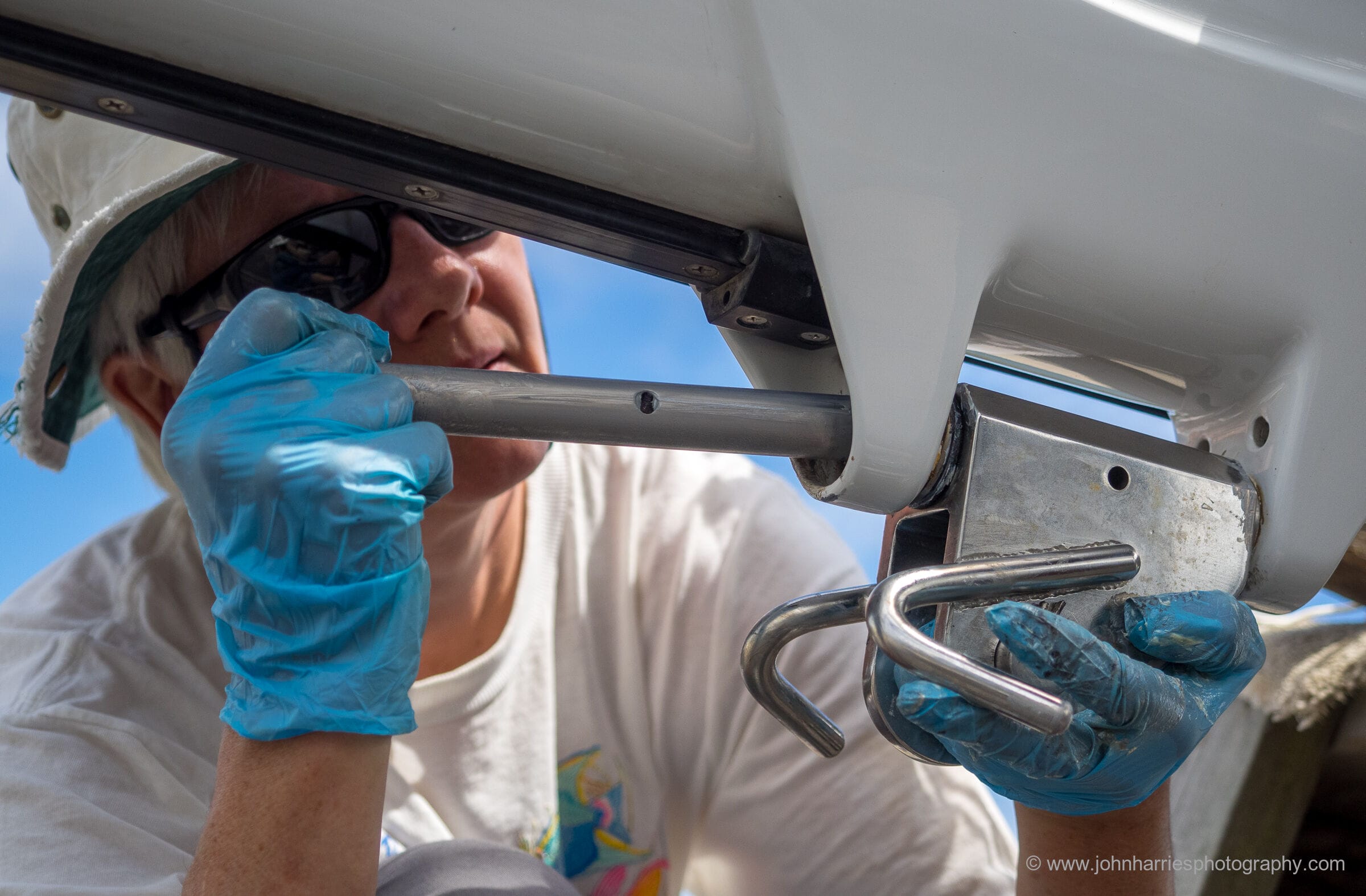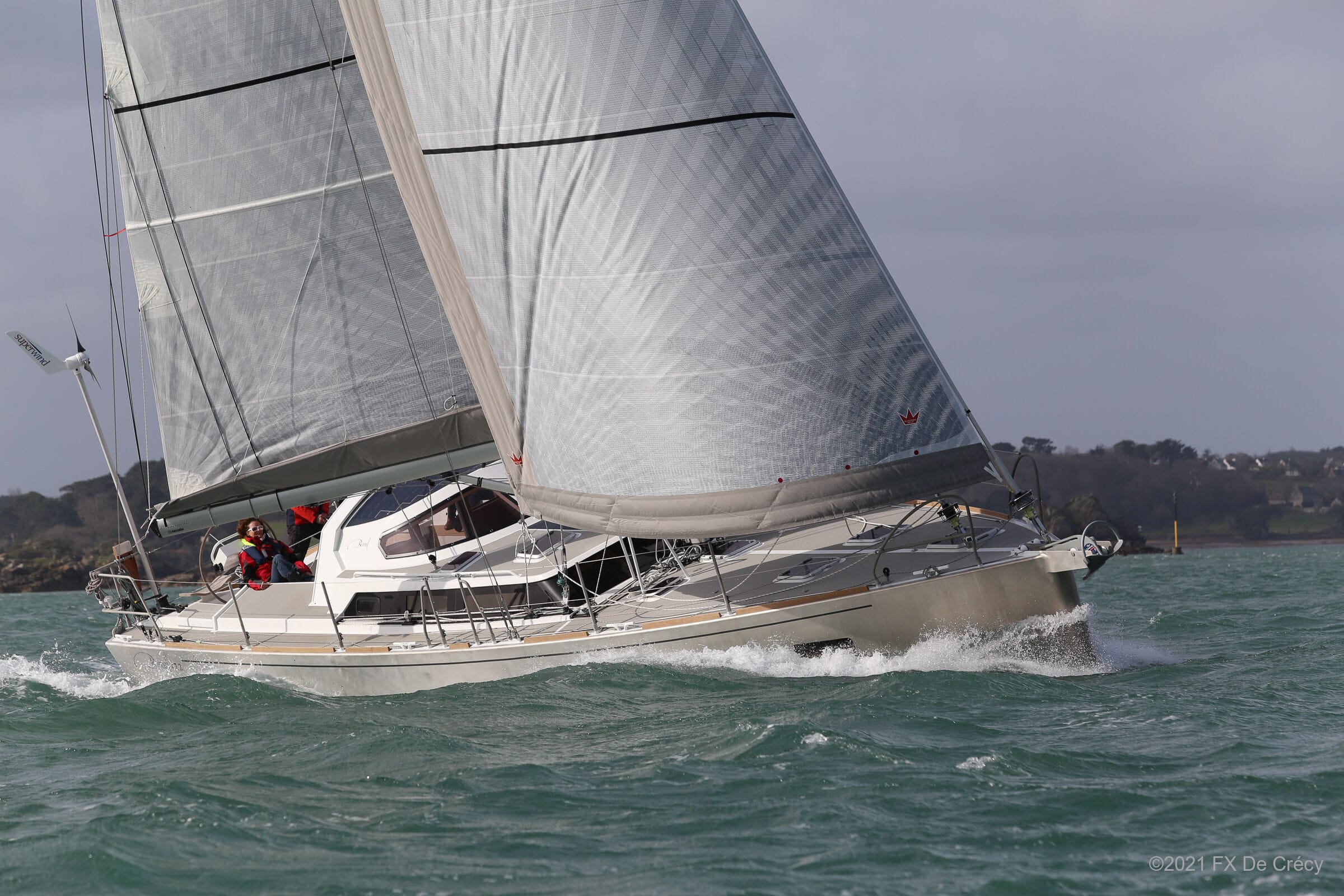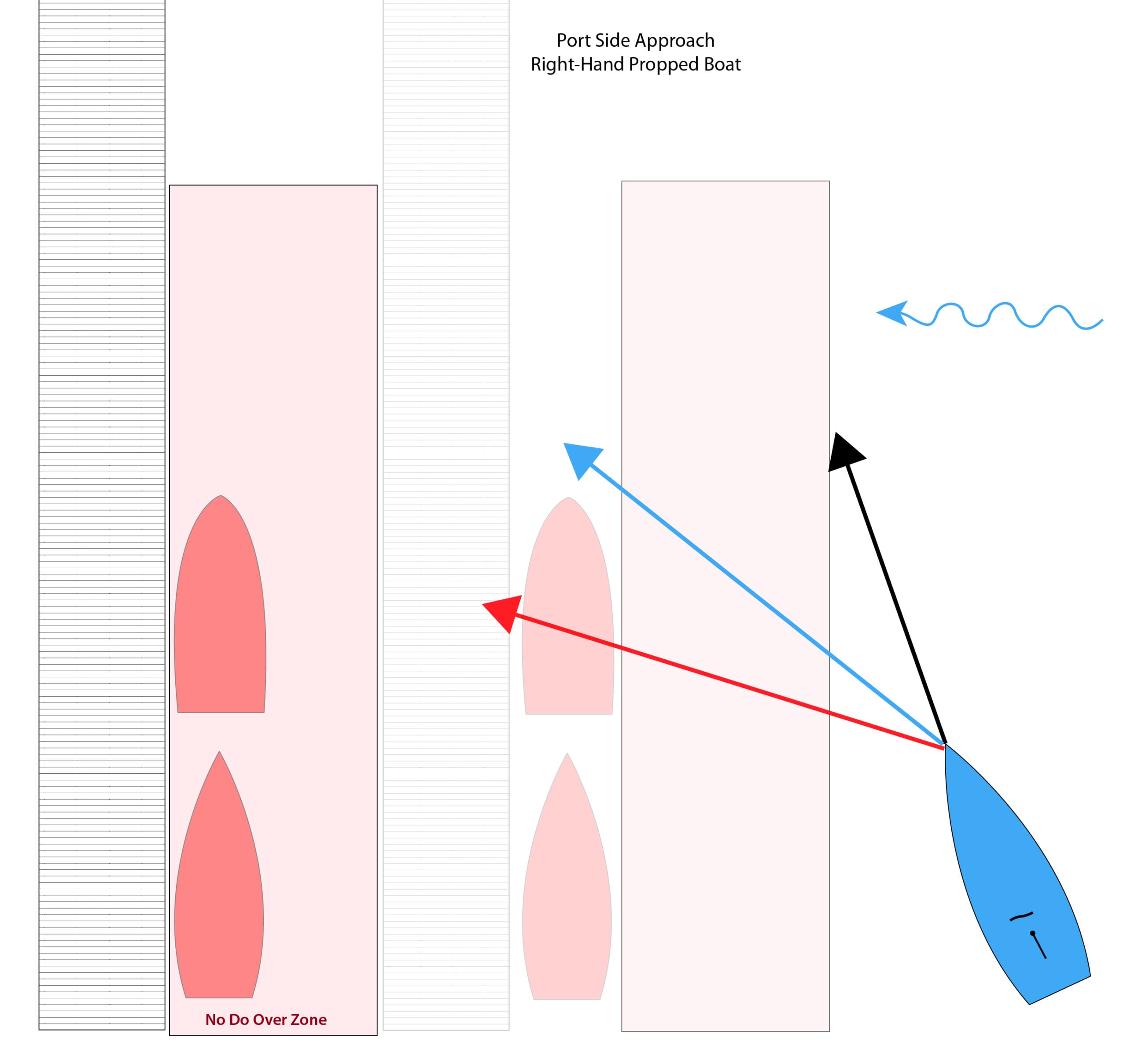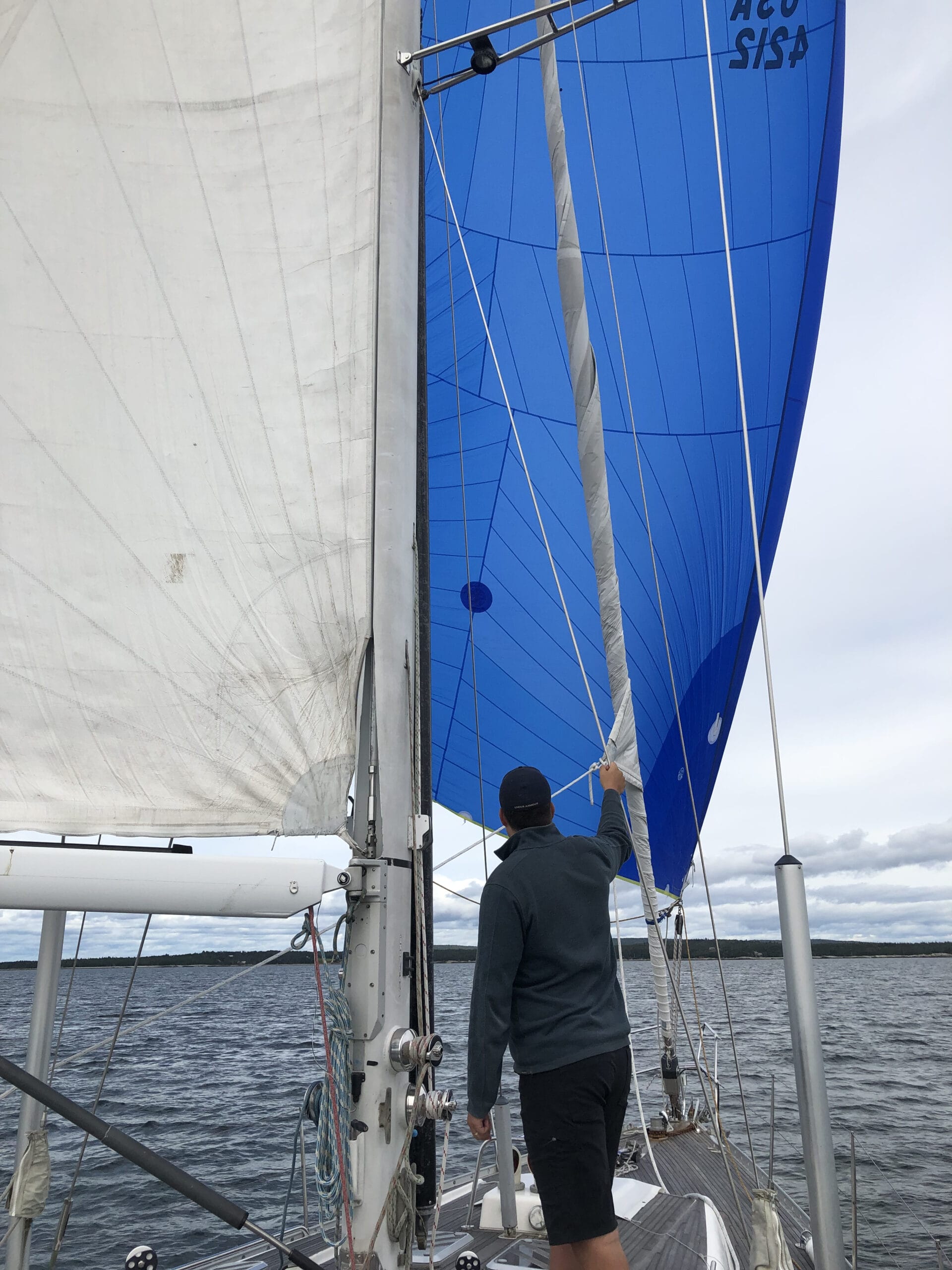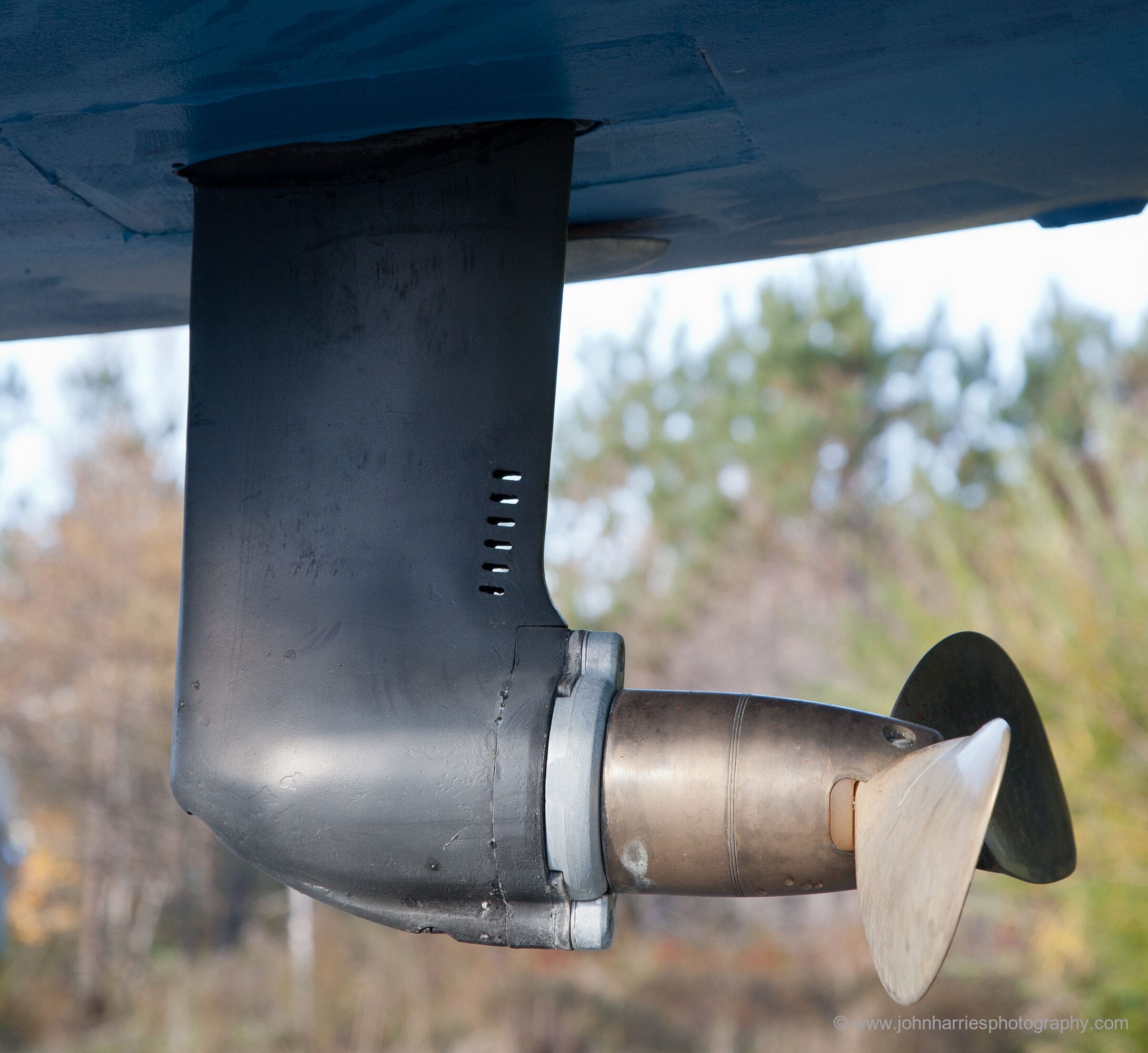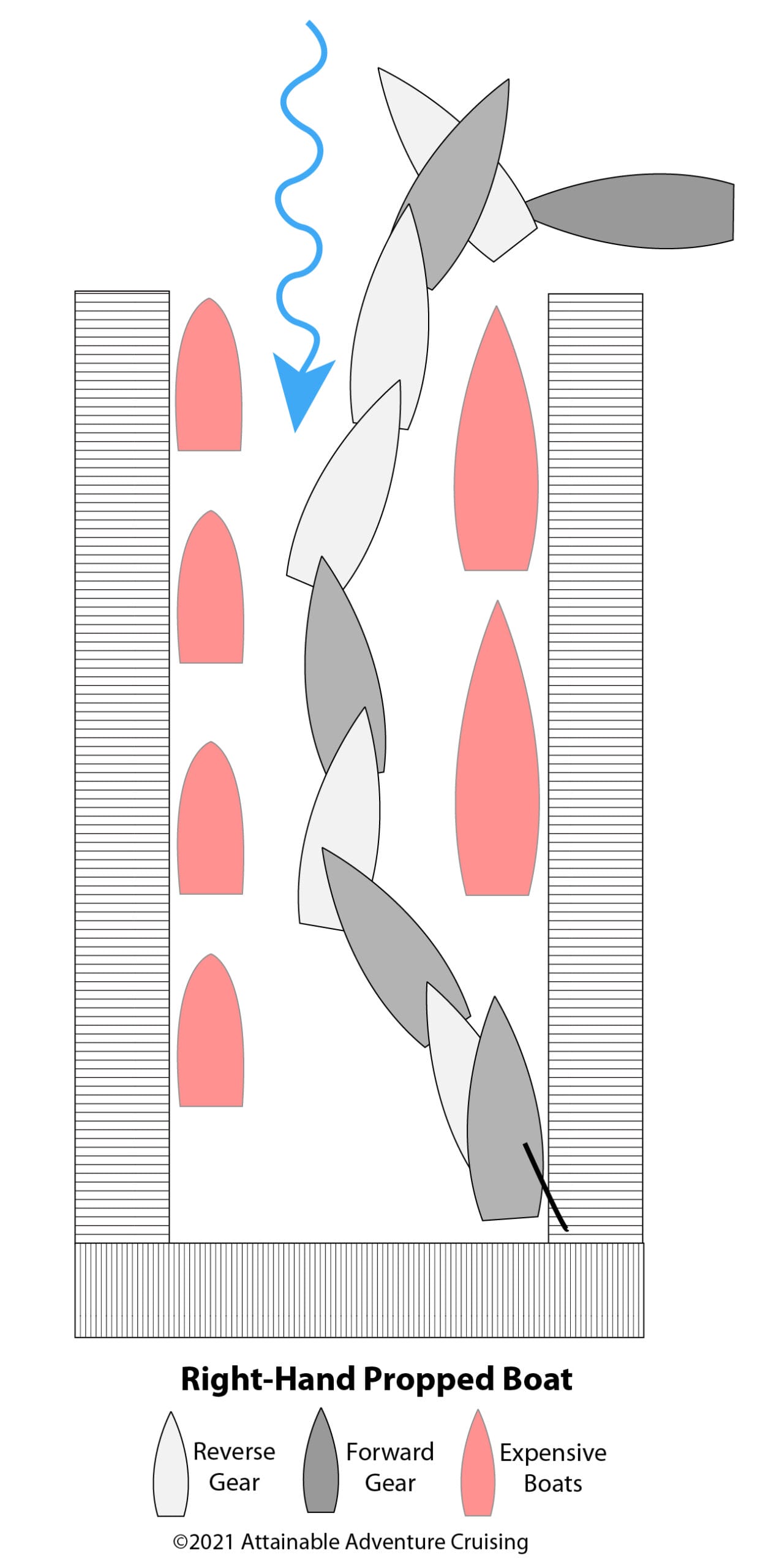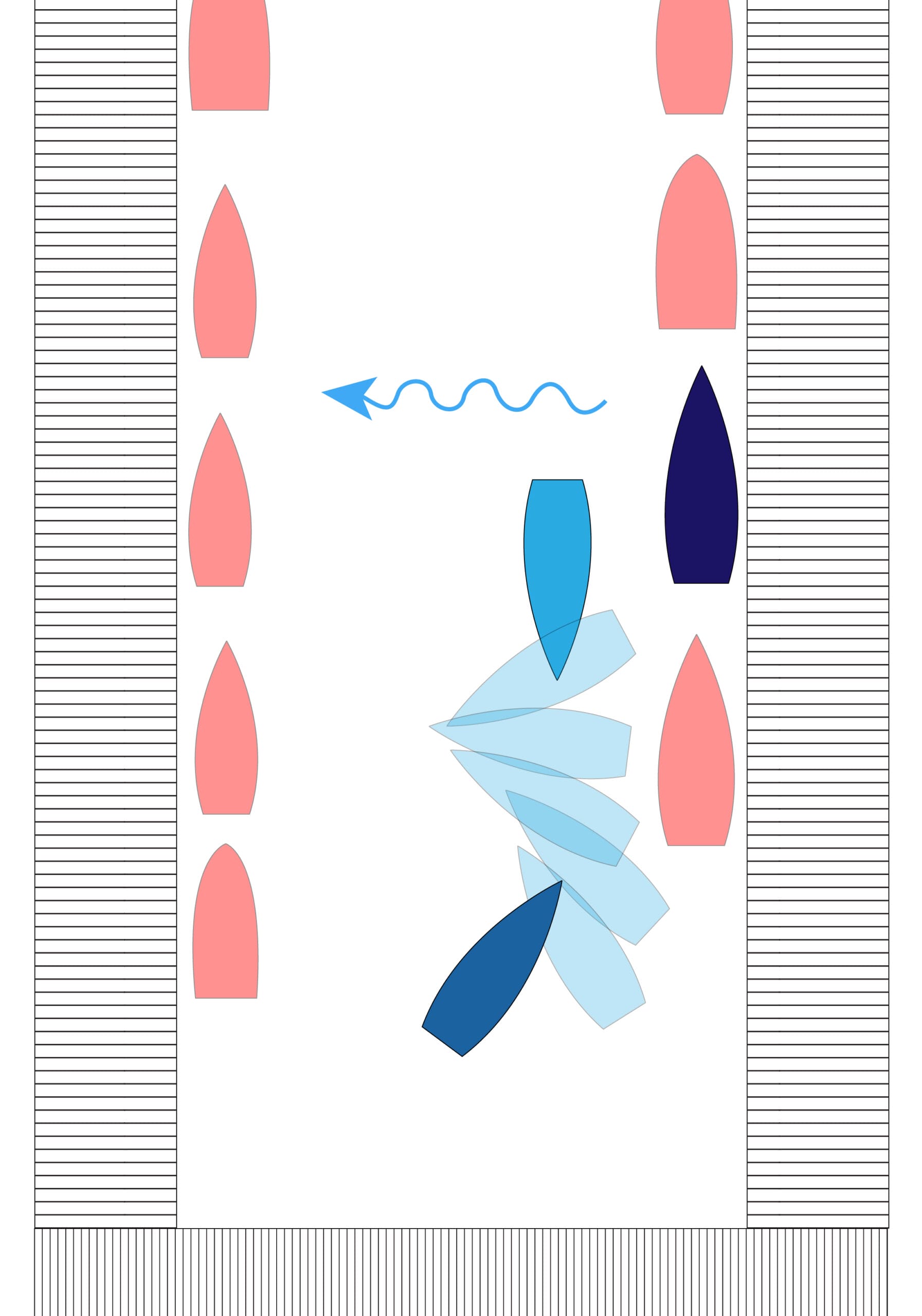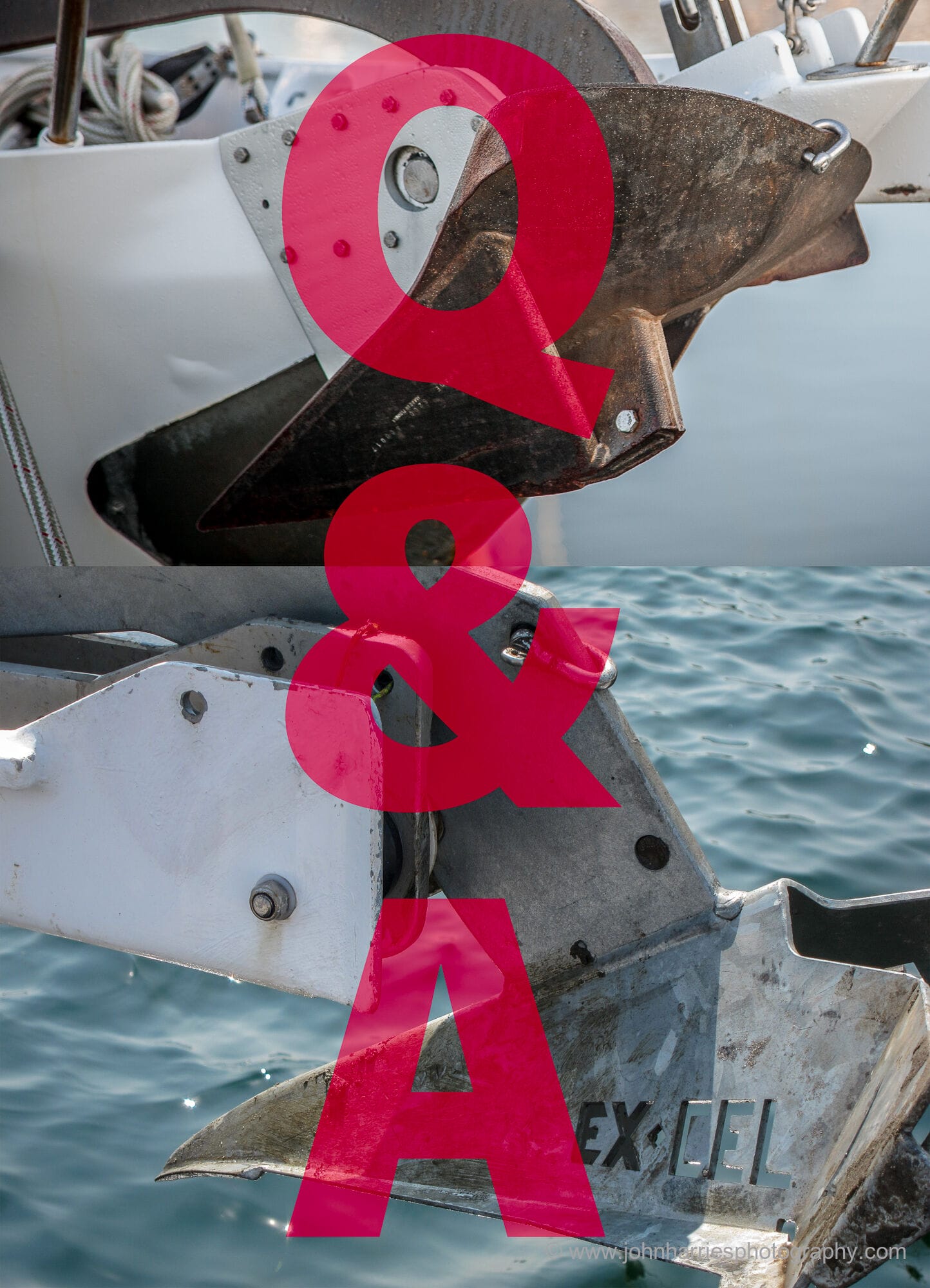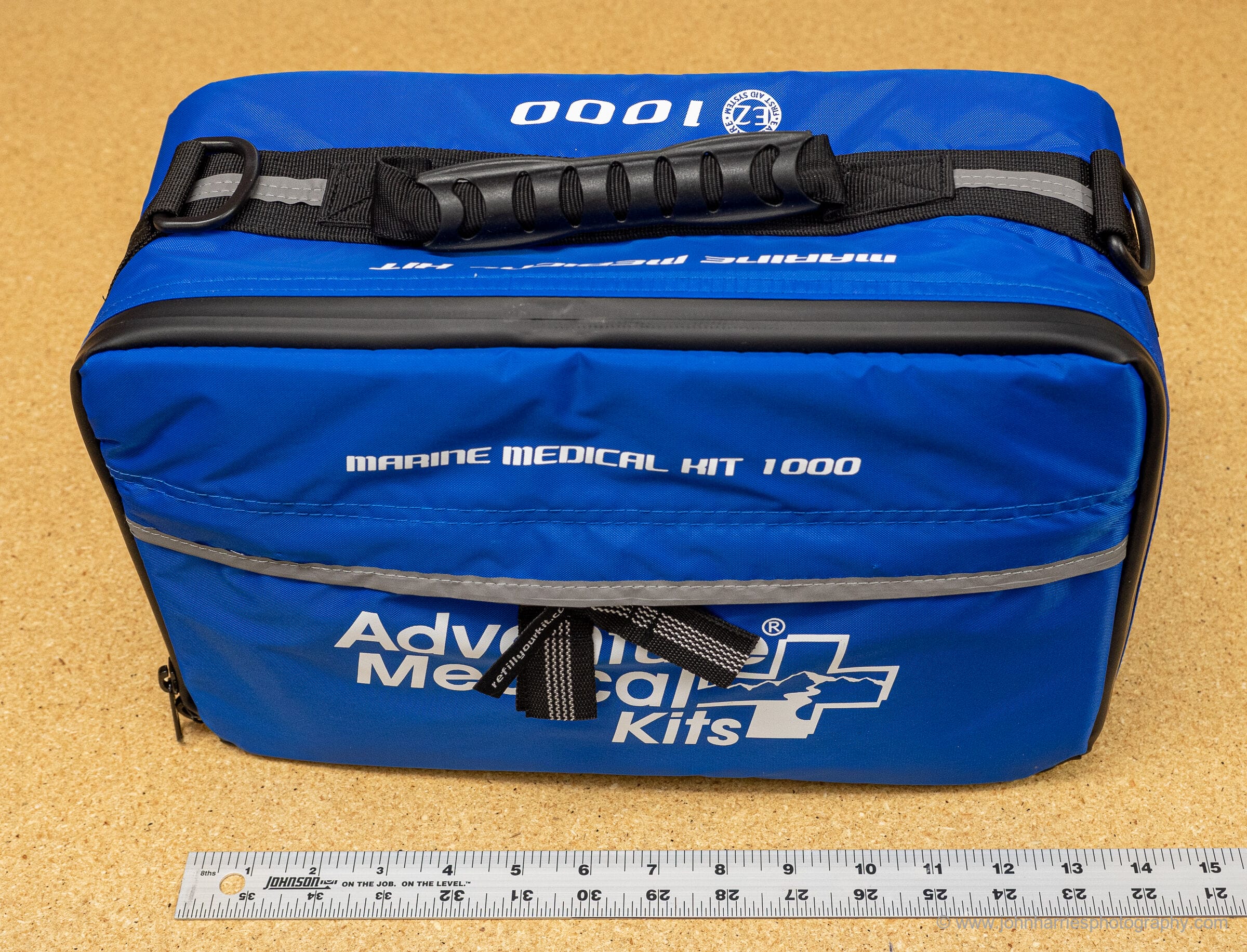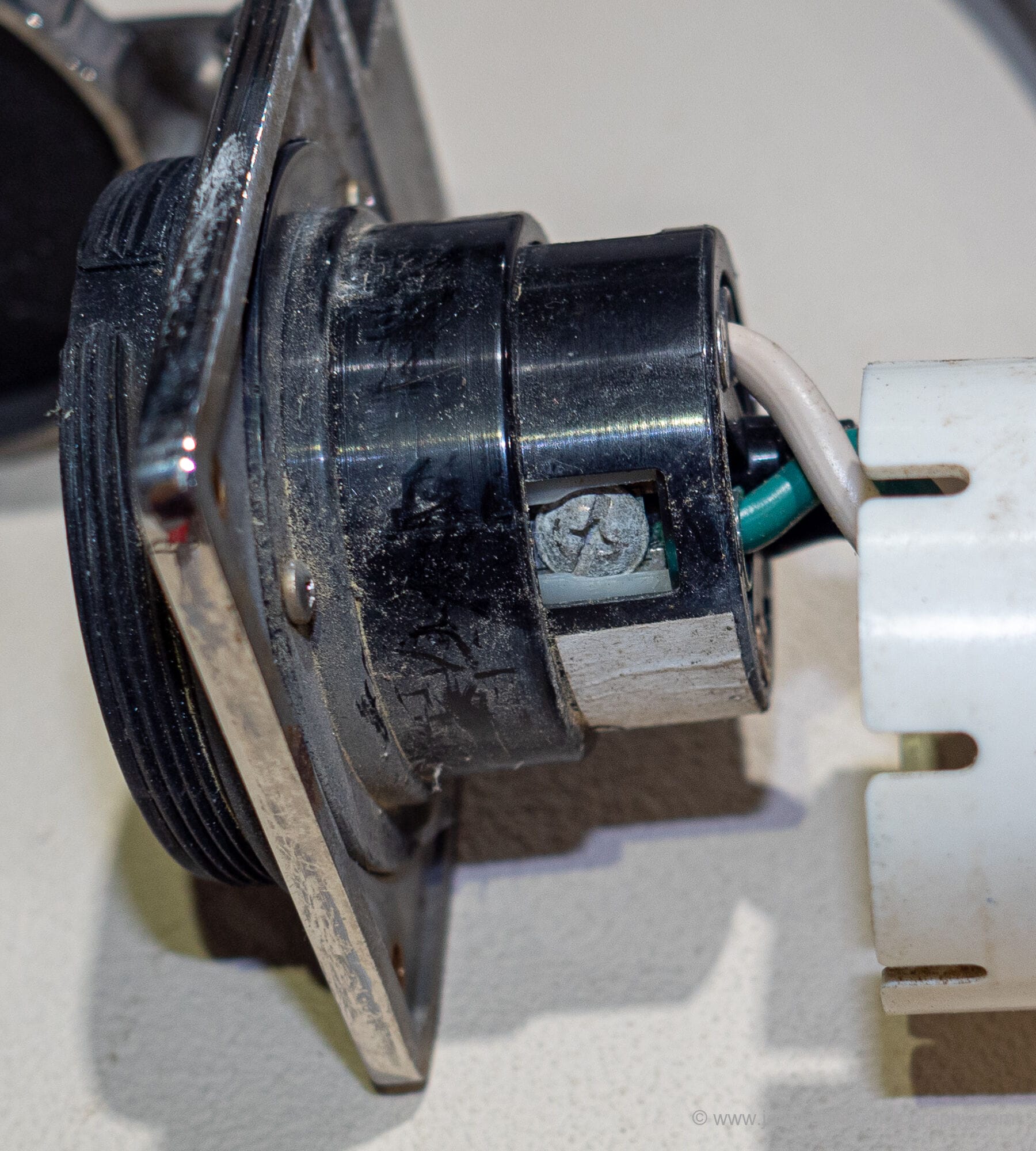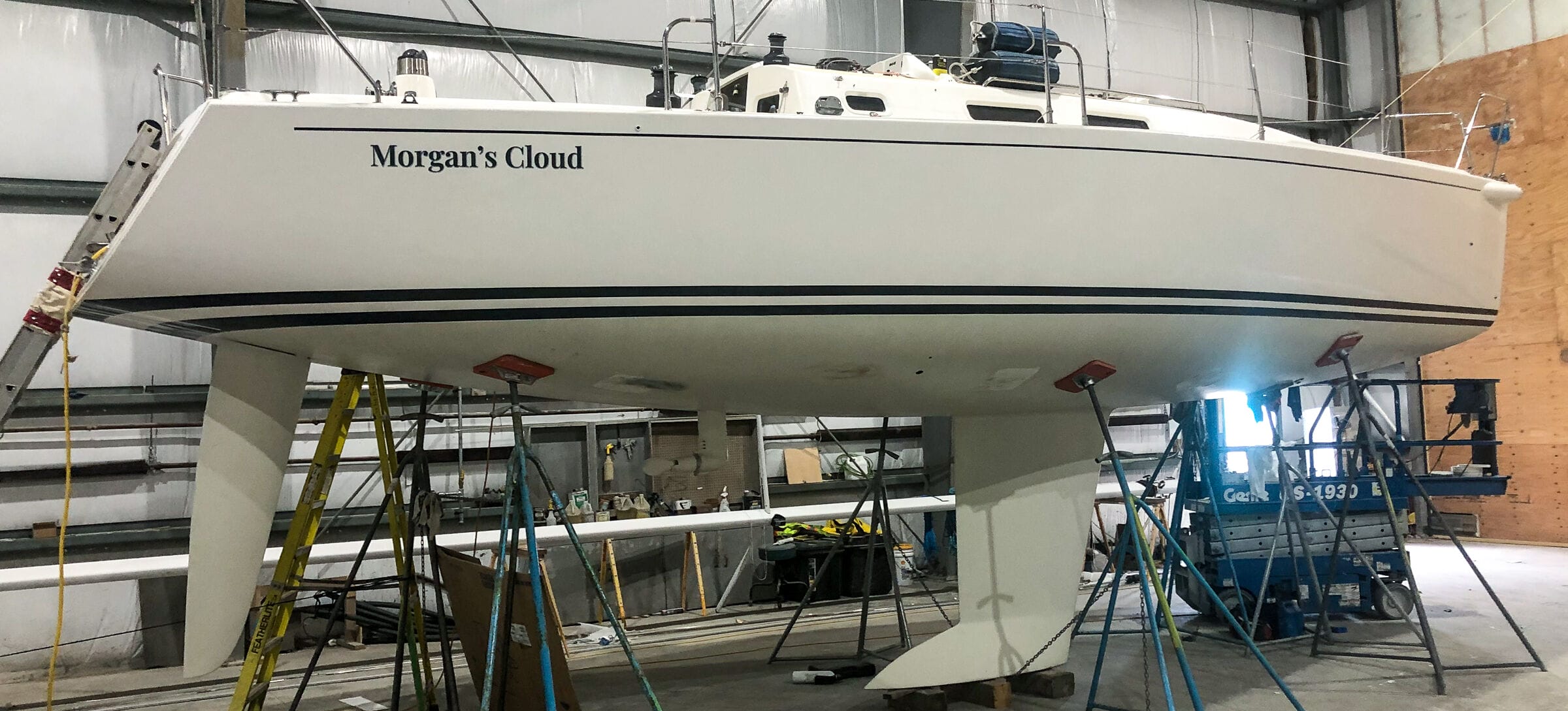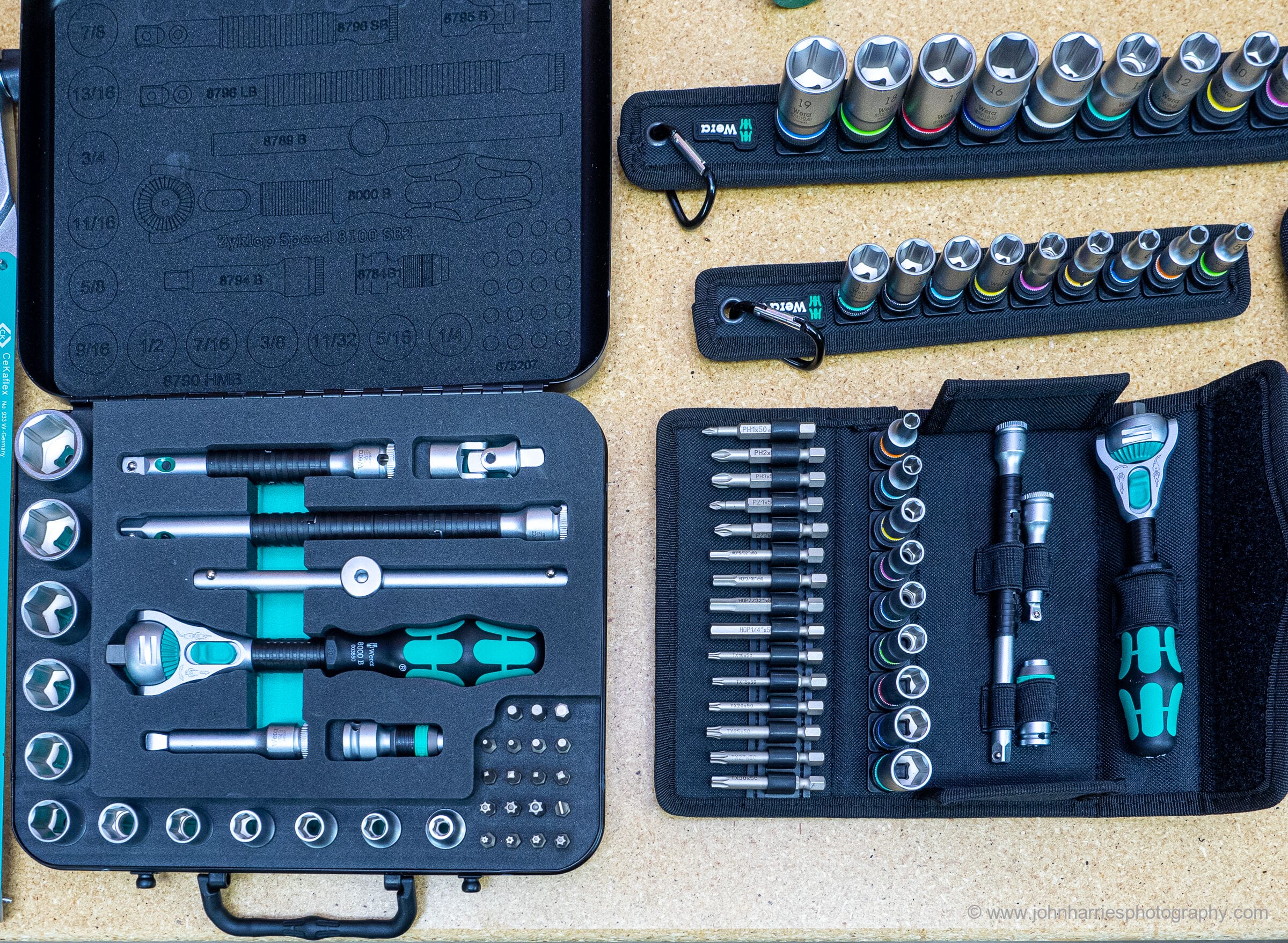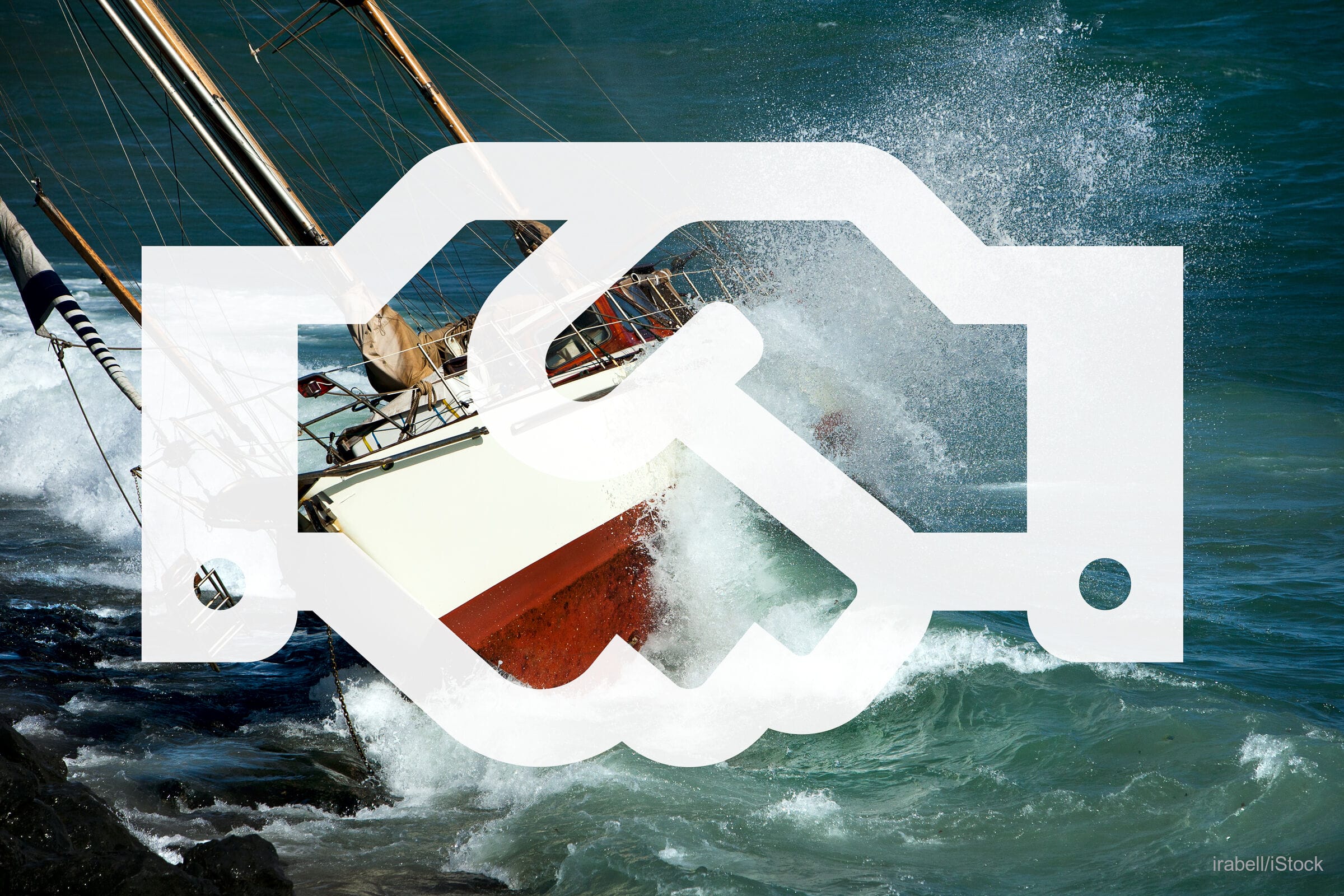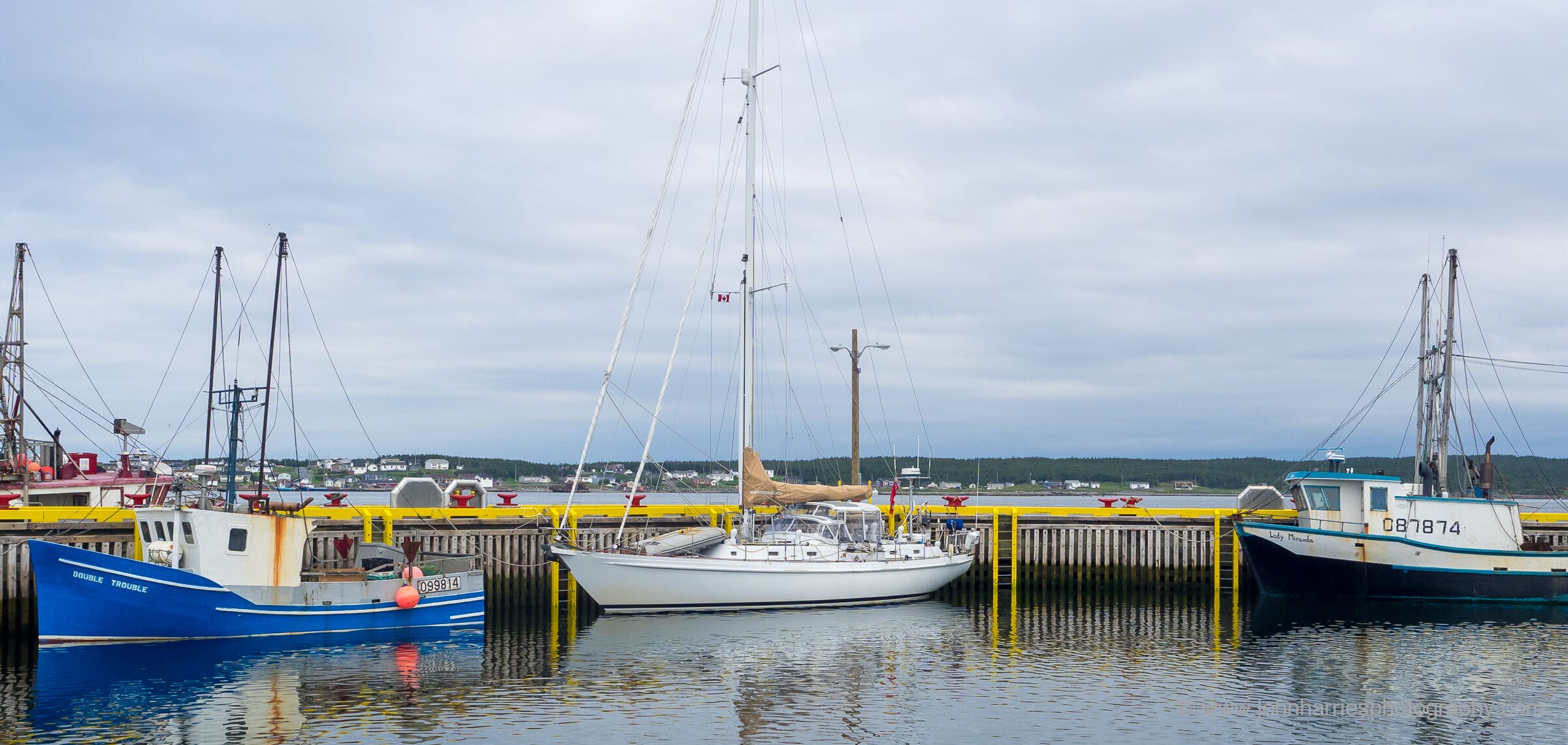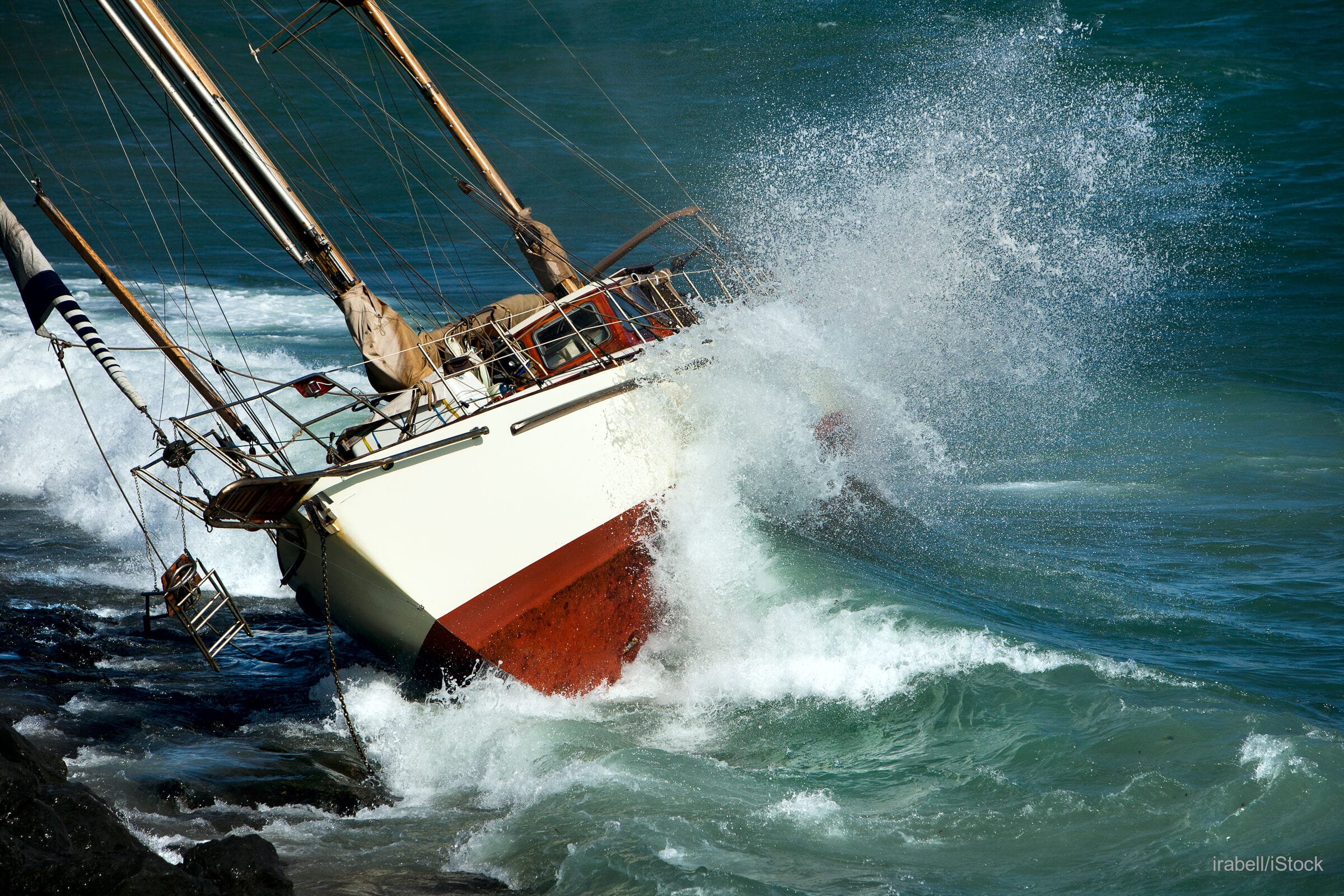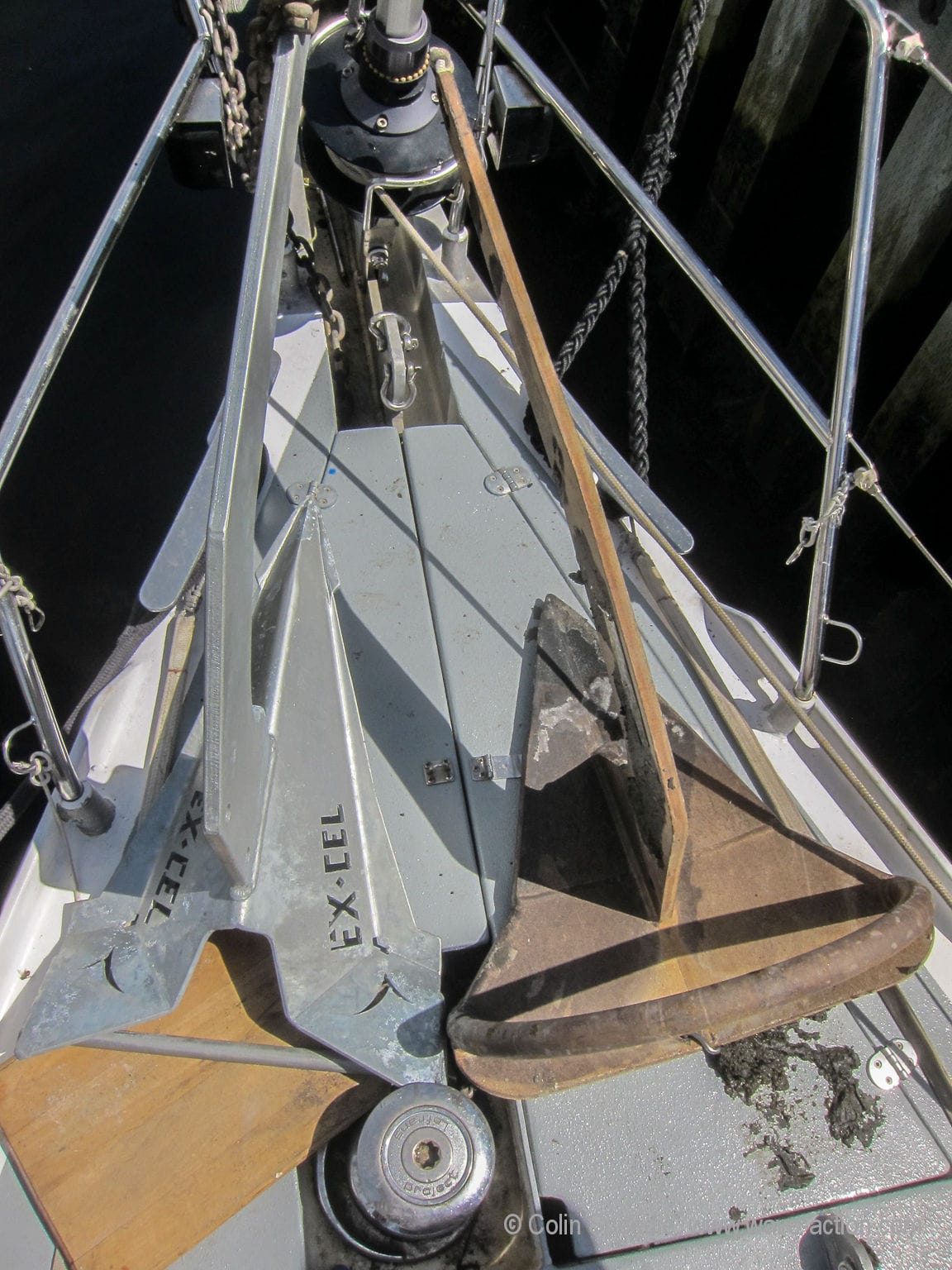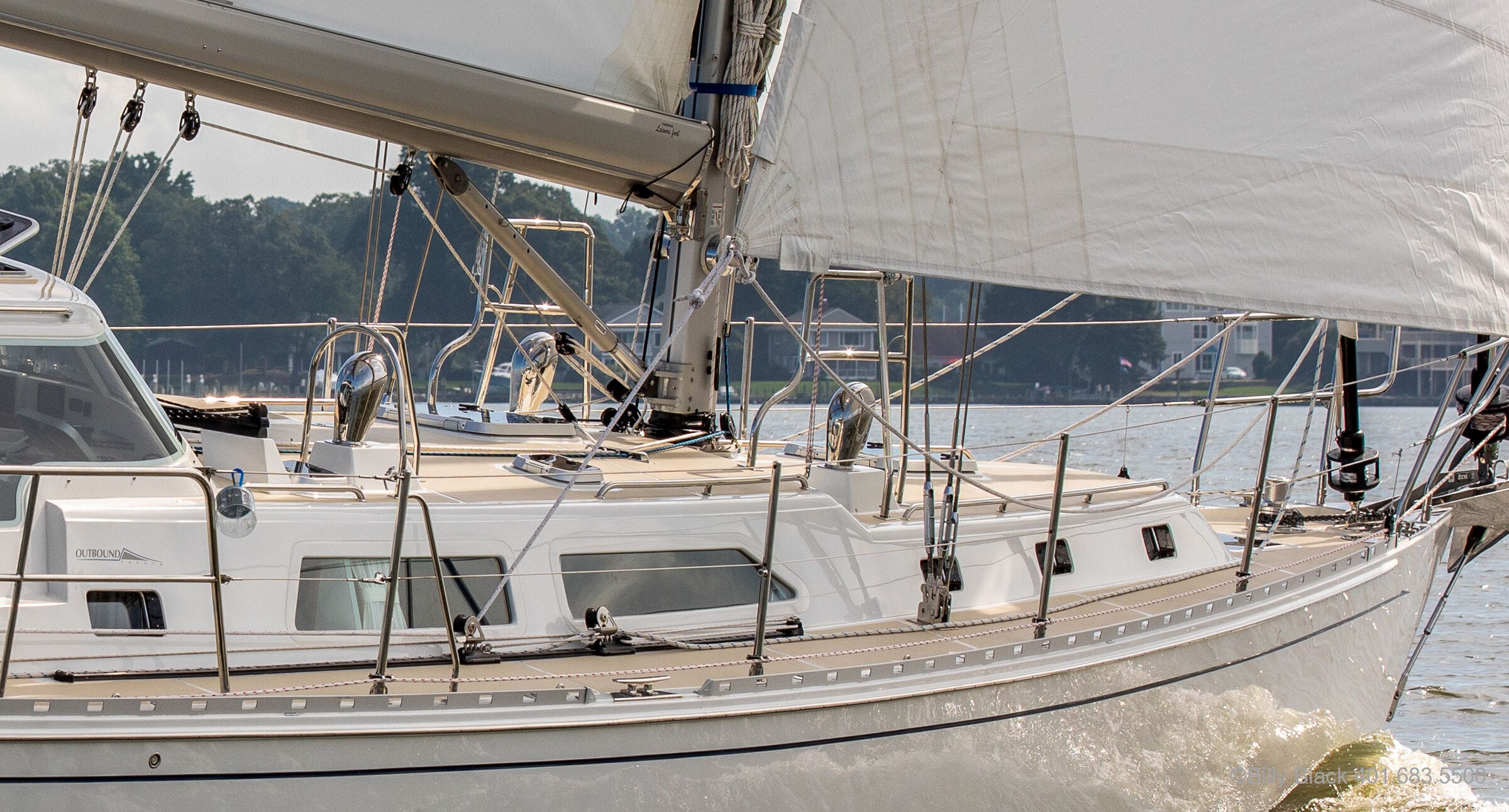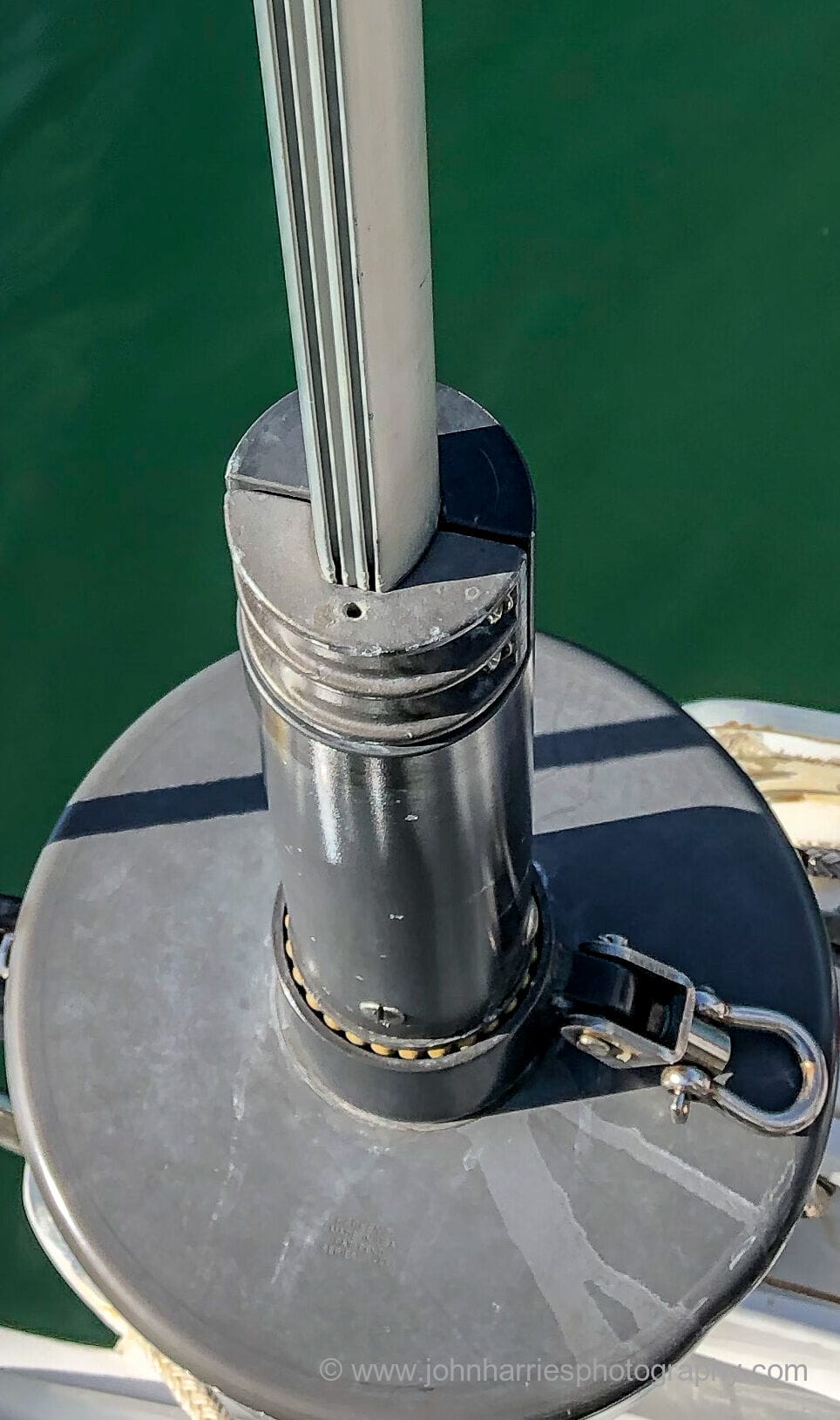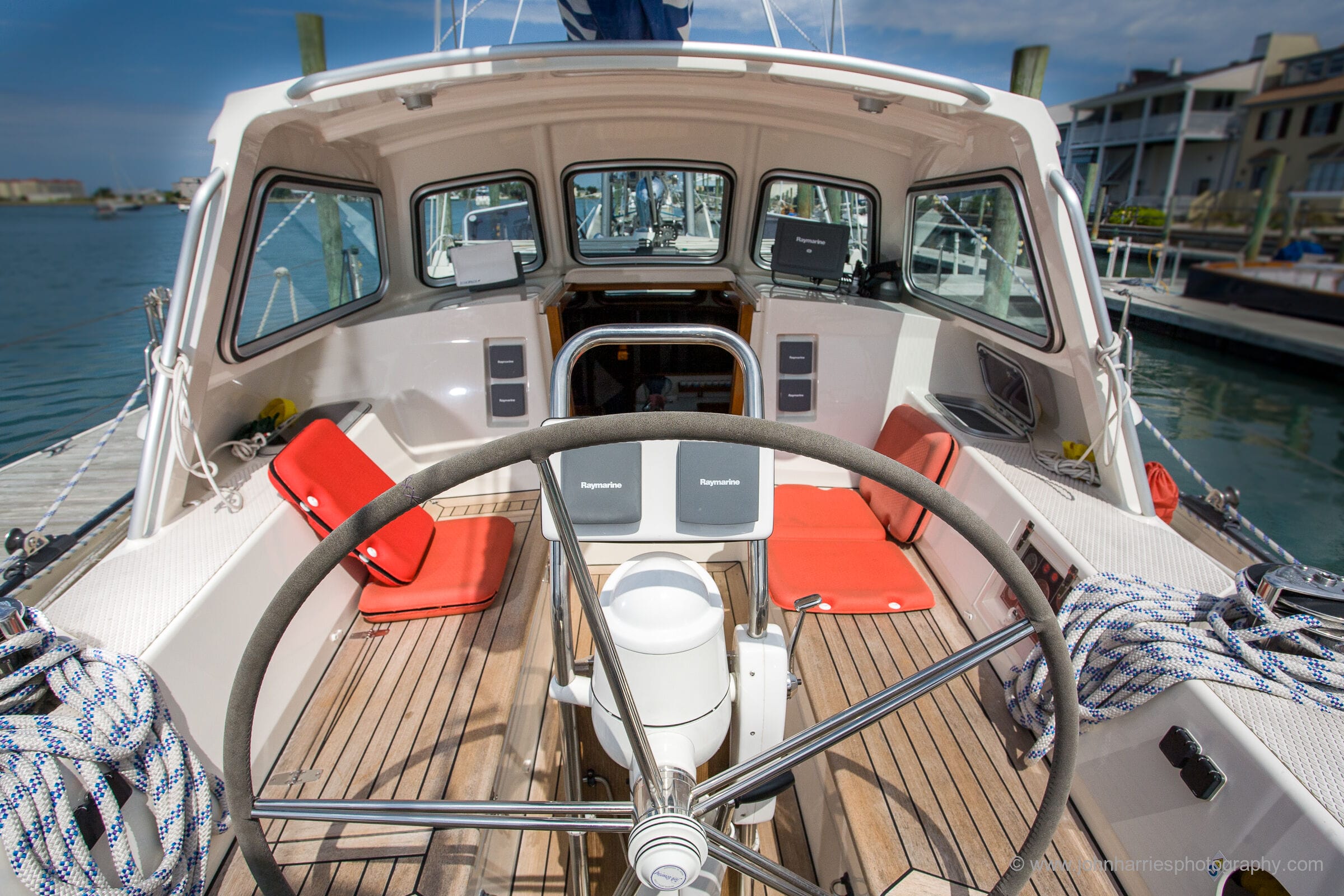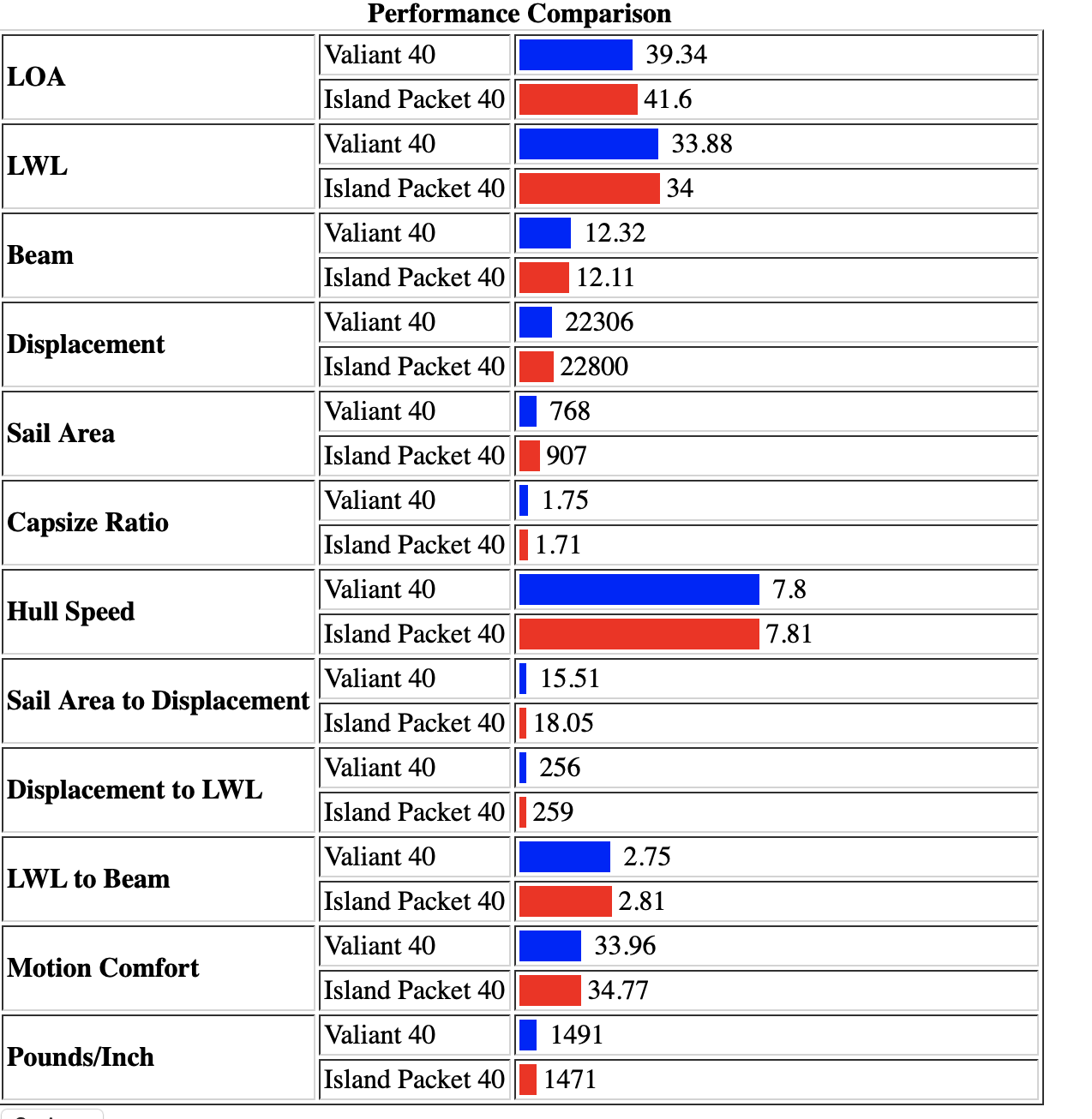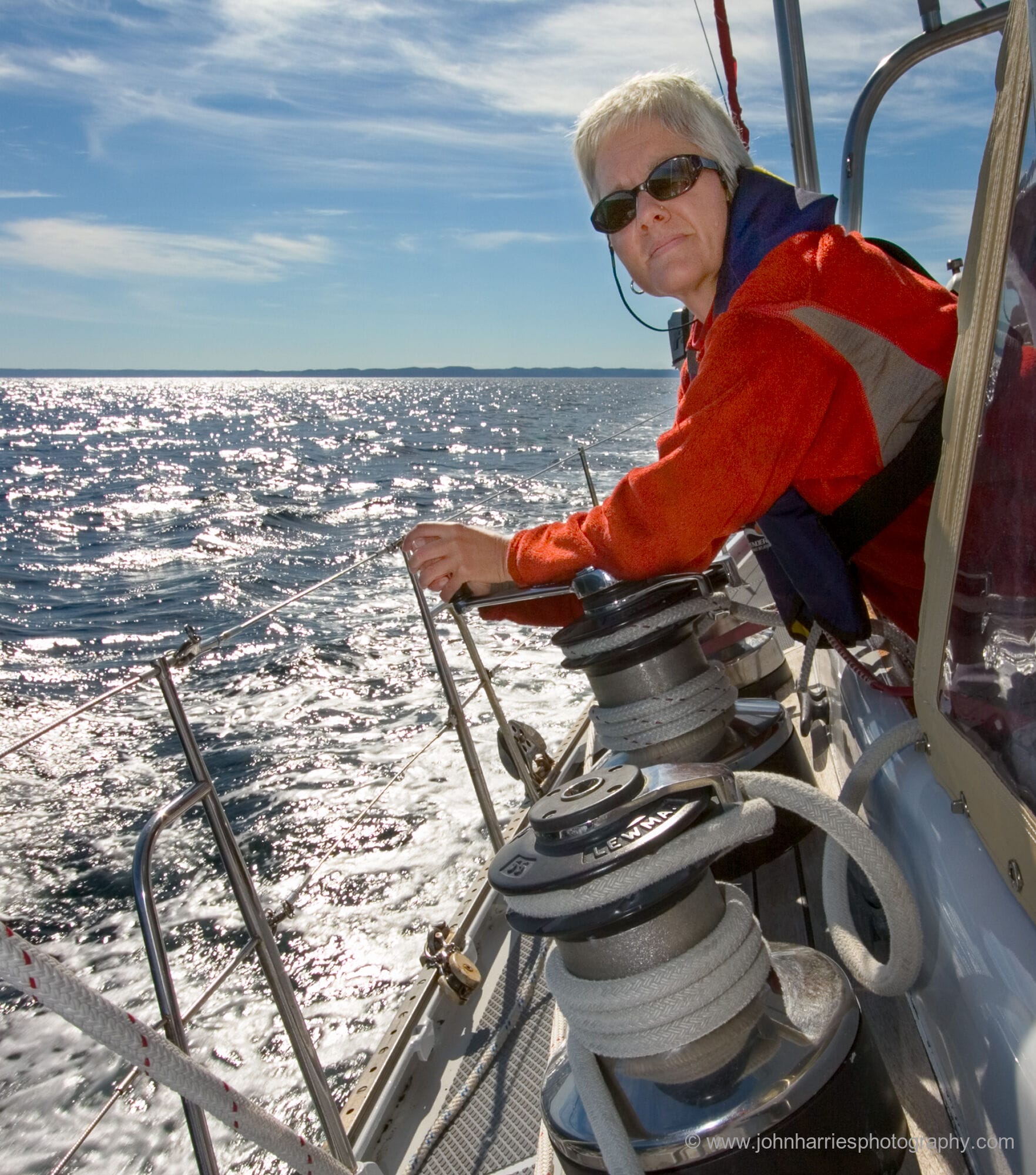MEMBERS
Click for TOC or scroll down for details
Articles in this topic:
- Sail Buying Tips
- Radar Collision Avoidance, Part 2—Turning Plotting Into Action
- Flawed Jackline Systems Revisited
- Radar Collision Avoidance, Part 1—Plotting
- TeamO Backtow Lifejacket/Harness Review
- 20 Practical Tips For Better Watchkeeping
- Reefing Tips
- 6 Tips For Mindful Watchkeeping
- How Many Reefs and How Deep?
- The Risks Of Sidedeck Jacklines Quantified
- 11 Tips For A Good Watch System
- Building a Robust and Practical Hard Dodger
- Tether Tension On A Dragging Crew Overboard
- 8 Offshore Cruising Boat & Gear Evaluation Tips
- Rigging Tips Part 2
- Spinlock Deckvest 6D Review
- Safe and Easy Offshore Sailing—When to Reef, Part 2
- Electrical Tips
- Why We Don’t Recommend Boom Brakes
- Safe and Easy Offshore Sailing—When to Reef, Part 1
- Building A Safer Boom Preventer, Part 3—The Details
- A Small-Boat Anchoring System
- When Is A Cruising Sailboat Too Big?
- Is Your Engine Properly Fused?
- Better Jacklines
- Building A Safer Boom Preventer, Part 2—Line and Gear Strength Calculator
- Building A Safer Boom Preventer, Part 1—Forces and Angles
- Surviving Storms While Coastal Cruising—21 Preparation Tips
- Rebuilding a Cobra Yacht Steering System—Reassembly
- Surviving Storms While Coastal Cruising—9 Tips for Anchorage and Harbour Selection
- Rebuilding a Cobra Yacht Steering System—Disassembly and Inspection
- Surviving Storms While Coastal Cruising—12 Strategy Tips
- 10 Reasons Why Hybrid Lithium Lead-Acid Systems are a Bad Idea
- Converting a Racing Sailboat to a Fast Cruiser—Performance and Rig
- Hurricane Mooring Weight Recommendation
- Lithium Buyer’s Guide—Budget: Economy Options
- Applying Power and Torque
- Hurricane Mooring Pennant Photo Article
- Understanding Power and Torque
- Lithium Buyer’s Guide—Budget: High End System
- Close to Home, Yet Far Away
- Wakespeed WS500 Compared To ARCO Zeus—What Matters
- 63 Cruising Boat Maintenance Tips
- Adventure 40 Electrical System—Part 1, Voltage and Batteries
- Deck Hardware Mounting Photo Essay
- Lithium Battery Buyer’s Guide—Fusing
- The Rolling Refit Continues
- Lithium Batteries Buyer’s Guide—Current (Amps) Requirements and Optimal Voltage
- The Zen of Sail Covers
- Lithium Batteries Buyer’s Guide—Balancing and Monitoring
- Selecting The Right Hull Form
- Lithium Batteries Buyer’s Guide—BMS Requirements
- Why We Have an eWincher on a Small Boat
- Electronic Chart Dangers
- Review of Ocean Signal PLB3 Against MOB1
- Weather Analysis—Part 2, Strategic
- Weather Analysis—Part 1, Tactical
- Yes, You Can Have an Offshore Sailboat For Less Than $US100,000
- Spade Anchor Failure, Update and Summary
- Weather Analysis—Hardware and Software
- Bilge Alarms And Monitoring
- Bent Spade Anchor Analysis
- 9 Tips to Assess Weather Forecast Accuracy
- Easily Driven Boats Are Better
- Sailing a New-To-Us Boat Home—What Could Go Wrong?
- Replacing Diesel-Generated Electricity With Renewables, Part 2—Case Studies
- Replacing Diesel-Generated Electricity With Renewables, Part 1—Loads and Options
- How Weight Affects Boat Performance and Motion Comfort
- Adventure 40 Cockpit 2.0
- Falmouth For Orders
- Watt & Sea Hydrogenerator Buyer’s Guide—Cost Performance
- To Sea At Last
- 10 Tips To Save Your Engine From Overheating
- Safety Inspection and Gear For a New-To-Us Boat
- Fire Extinguishers We Have Bought and Stuff We Learned
- Liferafts For Cruisers—Positioning and Mounting
- Starting With The Basics On A New-To-Us Cruising Boat
- Going Up The Mast—More Improvements
- Liferafts For Cruisers—40 Years of Real-World Experience
- Nine Autopilot Usage Tips and Hacks
- Liferafts For Cruisers—Purchase Criteria
- How To Tune An Autopilot To Steer Better—Part 2
- Finding and Buying a Dream
- Adventure 40 Deck-2.0
- How To Tune an Autopilot to Steer Better—Part 1
- Autopilot Buyer’s Guide
- Storm Strategy—Fore-Reaching
- Colin and Louise Have a New Boat
- Eight Steps to Get Ready For Lithium Batteries
- Q and A—Trucking a Boat
- A Real World Tested Tool Kit For Cruisers
- Five Boat Lift Usage Tips
- Adventure 40 Reveal—Salon and Forward Cabin
- Balancing Battery Bank and Solar Array Size
- Going Up The Mast at Sea
- Adventure 40 Reveal—Galley, Head, and Aft Storage
- Gear Leveling and Mounting Hack
- Going Up The Mast—Four Dangerous But Common Mistakes
- How To Do Amateur Engineering¹
- Going Up The Mast—Our System
- Going Up The Mast—Fundamentals
- Adventure 40 Reveal—On Deck
- Going Up the Mast—An Industrial Fall Prevention Approach
- Adventure 40 Reveal—Hull, Cockpit, and Rig
- In-Mast, In-Boom, or Slab Reefing —Performance, Cost and Safety
- In-Mast, In-Boom, or Slab Reefing—Convenience and Reliability
- Cross-Bank Battery Charging—DC/DC Chargers
- Cross-Bank Battery Charging—Splitters and Relays
- Battery Bank Separation and Cross-Charging Best Practices
- How Hard Can We Charge Our Lead-Acid Batteries?
- Choosing & Installing Battery Switches
- Battery Containment—Part 1
- 5 Safety Tips For Working on Boat DC Electrical Systems
- Building a Seamanlike Lithium Battery System
- Two More Shore Power Safety Upgrades
- 9 Tips To Select Seamanlike Gear
- Download Cruising Sailboat Rig Checklist
- When Stuff Goes Wrong At Sea
- 8 Tips To Prevent Lithium Battery Black Outs
- Why Lithium Battery Load Dumps Matter
- Cruising Sailboat Roller Furler and Track Inspection
- Positioning of Wood Plugs For Seacocks
- The True Price of Autopilots & Vane Gears
- Cruising Sailboat Rig Wiring and Lighting Inspection
- 7 Checks To Stop Our DC Electrical System From Burning Our Boat
- 11 Self-Steering Vane Gear Installation and Usage Tips
- Why Most New-To-Us Boat Electrical Systems Must Be Rebuilt
- Cruising Sailboat Running Rigging Inspection
- 12 Cruising Boat Maintenance Tips
- WakeSpeed WS500—Best Alternator Regulator for Lead Acid and Lithium Batteries
- Cruising Sailboat Standing Rigging Inspection
- Cruising Sailboat Spar Inspection
- Test Sail and Review of The Boréal 47.2
- Going Alongside (Docking)—12 More Tips and Tricks
- John Goes Sailboat Racing and Learns Stuff
- Protecting Our Boat’s Underwater Metals From Corrosion
- Going Alongside (Docking) in Current—Backing In
- Details Matter—Engine Failure at Sea
- Going Alongside (Docking) in Current—Turning in Confined Spaces
- Going Alongside (Docking) in Current—Fundamentals
- Helping a Member Choose an Anchor
- A Good First Aid Kit
- Why I Won’t Power Our Boat With a Portable Generator
- Setting and Striking a Spinnaker Made Easy and Safe
- Check Your Boat Shore Power System
- Our New Boat Selection Process—Fitness For Mission
- Cruiser’s Tool Kit—Wrenches
- 29 Tips To Get Insurance For Offshore Voyaging—Negotiating Cover
- 29 Tips To Get Insurance For Offshore Voyaging—Us and Our Boat
- Cruiser’s Power Tool Kit
- Leaving a Dock Against an Onshore Wind—Part 2
- Leaving a Dock Against an Onshore Wind—Part 1
- Getting Insurance For Offshore Voyaging—Understanding The Problem
- 14 Tips To Come Alongside Single-Handed—Part 2
- 14 Tips for Coming Alongside Single-handed—Part 1
- Integrating and Documenting NMEA 0183 and 2000 Networks
- Two More Anchor Selection Criteria
- Making Anchor Tests More Meaningful
- Choosing A Cruising Boat—Shade and Ventilation
- When Electric Drive Works For a Cruising Sailboat
- Roller Furling Headsail Risks and Rewards
- Choosing a Cruising Boat—Shelter
- Q&A—Sailboat Performance, When The Numbers Fail
- Offshore Sailboat Winches, Selection and Positioning
- Best Offshore Boat Cockpit Cushions
- Buying a Boat—A Different Way To Think About Price
- Safety: We Can’t Do Or Even Learn About It All
- Cockpits—Part 2, Visibility and Ergonomics
- Cooking Options For Live-aboard Voyagers—Part 2, Liquid Fuel
- Cooking Options For Live-aboard Voyagers—Part 1, Electric
- Cockpits—Part 1, Safe and Seamanlike
- Should Your Boat’s DC Electrical System Be 12 or 24 Volt?—Part 2
- Should Your Boat’s DC Electrical System Be 12 or 24 Volt?—Part 1
- Topping Lift Tips and a Hack
- The Danger of Voltage Drops From High Current (Amp) Loads
- Rigid Vangs
- Maretron—Better NMEA 2000 Cabling
- Efficient Generator-Based Electrical Systems For Yachts
- Is Induction Cooking For Boats Practical?
- eWincher Electric Winch Handle Review—Part 3, Reliability and Summary
- eWincher Electric Winch Handle Review—Part 2, The Competition
- eWincher Electric Winch Handle Review—Part 1, Our Testing
- Second Level Thinking About Offshore Voyaging Boats
- SeaAngel SA15 AIS Crew Overboard Beacon Compared to The Ocean Signal MOB1
- Sailboat Deck Layouts
- US$30,000 Starter Cruiser—Part 2, The Boat We Bought
- US$30,000 Starter Cruiser—Part 1, How We Shopped For Our First Cruising Sailboat
- Washing Machines: Complexity and Space Considerations
- Planning a Refit— Keel Removal and Inspection
- Q&A Backing Out of a Bow-In Med Moor
- Two New Designs From Boréal
- Stupid Alternator Regulators Get Smarter…Finally
- Sail Area: Overlap, Multihulls, And Racing Rules
- Torquing Keel Bolts
- Refits—The Radical Option
- Non-Destructive Testing of Keel Bolts
- Cruising Rigs—Sloop, Cutter, or Solent?
- Offshore Sailboat Keel Types
- Outbound 46 Review—Part 2, Keel, Rudder, Bow Thruster, and Construction
- Planning and Budgeting an Engine Rebuild or Replacement
- Outbound 46 Review—Part 1, Hull Form
- Planning a Refit—Upfront Costs
- ShoreFasts—Part 3, The Gear
- ShoreFasts—Part 2, Example Setups Plus Tips and Tricks
- ShoreFasts—Part 1, When to Use Them
- Planning a Refit—Rudders, Repair or Replacement
- Planning a Refit—The Problem With Rudders
- Yawing at Anchor, The Theory and The Solution
- Planning a Refit—Boat Parameters
- Retrieval of Dyneema (Spectra) Series Drogues Solved
- Planning a Refit—It’s a Lot About You
- Anchoring—Chain: Stoppers, Termination and Marking
- A Sail Away Offshore Cruising Boat For Less Than US$100,000—Best Hull Material
- Anchoring—Kellets
- A Sail Away Offshore Cruising Boat For Less Than US$100,000—Rudders and Keels
- A Sail Away Offshore Cruising Boat For Less Than US$100,000—Decks, Hulls and SS Fittings
- Anchoring—Snubbers
- A Sail Away Offshore Cruising Boat For Less Than US$100,000—Introduction
- Four Hand Tools I Should Have Bought Years Ago
- The Garcia Exploration 45 Compared to The Boréal 47—Part 5, Interior, Summary and Price
- The Garcia Exploration 45 Compared to The Boréal 47—Part 4, Inside Watch Stations
- Insanely Cool Anchorage Toys
- The Garcia Exploration 45 Compared to the Boréal 47—Part 3, Hull and Build
- Passage Anchorages
- The Garcia Exploration 45 Compared to the Boréal 47—Part 2, Deck and Cockpit
- The Garcia Exploration 45 Compared to the Boréal 47—Part 1, Introduction and Rig
- Ultra Anchor Review
- Which is Best For Navigation: Plotter, Computer or Tablet?
- Buying a Boat—Never Say Never
- New Satellite Communications Systems
- What We Need to Know About Moisture Meters and Wet Fibreglass Laminate
- Buying a Fibreglass Boat—Hiring a Surveyor and Managing the Survey
- A Useful, But Potentially Deadly, Feature of Navigation Apps and Plotters
- Buying a Cruising Boat—Five Tips for The Half-Assed Option
- 12 Electronic Navigation Tips From a Cruise on Someone Else’s Boat
- Coastal Passages, Part 5—On To The Finish
- You May Need a Bigger Boat Than You Think
- Costal Passages, Part 4—Keep On Plugging
- Six Things We Need to Check Before Survey
- Series Drogues: Learning From Randall Reeves
- Coastal Passages, Part 3—Off We Go
- Why Are Saildrives Even A Thing?
- Coastal Passages, Part 2—Rounding Headlands
- Six Things We Can Learn From A Night Approach That Ended on a Lee Shore
- Coastal Passages, Part 1—Making a Plan, 10 Tips
- Six Warnings About Buying Fibreglass Boats
- Rocna Resetting Failures and Evaluation of Vulcan and Mantus
- Learn From The Designers
- Refitting an Old Boat Can Work…For Some
- Specifying Primary Anchor Size
- SPADE, SARCA Excel, or Some Other Anchor?
- UV Protection For Roller Furling Sails
- Nigel Calder’s Integrel, Part 2—Is It Really Better Than a Generator?
- Nigel Calder’s Integrel, Part 1—What You Need To Know
- SARCA Excel Anchor—A Real World Test
- Cruising Boat Electrical System Design, Part 3—Specifying Optimal Battery Bank Size
- Cruising Boat Electrical System Design, Part 2—Thinking About Systems
- Cruising Boat Electrical System Design, Part 1—Loads and Conservation
- Alternatives to Chainplates For Drogue Attachment…Or Not
- Stuff We Gotta Do—The Anchor Roller Version
- Ocean Passaging—Turning Back Is Hard To Do
- Anchor Chain Catenary, When it Matters and When it Doesn’t
- Which Old Salts Should We Listen To? 10 Ways To Decide—Part 2
- Colin on Anchoring
- Which Old Salts Should We Listen To? 10 Ways To Decide—Part 1
- Storm Survival FAQ
- AIS Crew Overboard Beacons—Setting Up The Boat Alarms Right
- Just Get a Series Drogue Designed By Don Jordan…Dammit!
- Amidships “Preventers”—A Bad Idea That Can Kill
- Rogue Waves Are Not Bad Luck
- 5 Ways We Are Updating Our Thinking On Fire Fighting
- Battery Monitors, Part 3—Calibration and Use
- Battery Monitors, Part 2—Recommended Unit
- Battery Monitors, Part 1—Which Type Is Right For You?
- Battle Testing a Jordan-Designed Series Drogue—Round 2
- Rigging Tips Part 1
- 10 Things That Are Common On Offshore Cruising Boats…But Shouldn’t Be
- Rig Tuning, Part 5—Sailing Tune
- Battery Bank Size and Generator Run Time, A Case Study
- Rig Tuning, Part 4—Mast Blocking, Stay Tension, and Spreaders
- Rig Tuning, Part 3—6 Steps to a Great Tune
- Rig Tuning, Part 2—Understanding Rake and Bend
- Rig Tuning, Part 1—Preparation
- Battery Options, Part 2—Lead Acid
- Battery Options, Part 1—Lithium
- Two Dangerous Rigging Mistakes
- Boréal Yachts—Looking To The Future
- Boréal Yachts—Eight Years On
- 8 Things I Learned From a Lazy Man’s Galley Makeover
- Time to Stop Using And Selling Tethers with Gibb-style Hooks
- Crew Overboard Recovery—Our Replacement For Quick Stop
- Crew Overboard Recovery, Is The Quick Stop Bogus?
- Which Lifejacket Auto-Inflator Should We Select?
- Should We Wear Lifejackets or Harnesses, Both, Neither?
- Apps to Manage Boat Maintenance and Cruises
- Managing Boatyard Costs—Part 2
- Managing Boatyard Costs—Part 1
- Smartphone (CrewWatcher) or AIS-Based Crew Overboard Beacons?
- Severe Weather Probability Forecast Product
- Coming Alongside (Docking)—Backing In, Part 2
- Coming Alongside (Docking)—Backing In, Part 1
- Surviving The Boatyard—Part 2
- Surviving The Boatyard—Part 1
- Running Rigging Recommendations—Part 2
- Weather Routing In Action
- Running Rigging Recommendations—Part 1
- 29 Aluminum Boat Care Tips—Part 3
- Automated Weather Routing—Part 1, The Tools
- 29 Aluminum Boat Care Tips—Part 2
- Q&A, Coming Alongside (Docking) With Twin Rudders
- 29 Aluminum Boat Care Tips—Part 1
- Seven Skills We DON’T Need to Go Cruising
- The Golden Globe Race—The Boats and the Refits
- We Love The Way Our Anchor Drags
- Iridium GO! and UUPlus, Real World Use Review
- Watt & Sea Hydro Generator Review
- Can We Really Be Seen By Ships at Night?
- Crew Overboard Prevention—Use of Climbing Harnesses
- Coming Alongside (Docking)—Taming the Wind
- Coming Alongside (Docking)—The Final Approach
- Coming Alongside (Docking)—Manoeuvring in Close Quarters
- Battle Testing a Jordan-Designed Series Drogue—Round 1
- Get-Home Backup For Offshore Motorboats—Part 3, The Winner
- Get-Home Backup For Offshore Motorboats—Part 2, The Options
- Get-Home Backup for Offshore Motorboats—Part 1, Is It Even a Thing?
- Boat Heating—Part II
- Determining When Heaving-To Is Dangerous
- 10 Ways to Make Your Boat Easier to Bring Alongside a Dock
- Boat Heating—Part I
- Rigging The Spring That Makes Docking Easy, Or an Alternative
- Coming Alongside (Docking) in 4 Easy Steps
- Transitioning From Heaved-to To a Series Drogue
- Series Drogue Durability Problems
- The Right Tethers To Keep Us Aboard—Part 2, Construction and Hardware
- The Right Tethers To Keep Us Aboard—Part 1, A Mix
- 8 Radar Use Tips
- Three Tips to Make Your Cruising Boat Fault Tolerant
- 11 Tips for Safe Navigation With Phones and Tablets
- Navigation in Fog—Underway
- Navigation in Fog—Preparation
- Navigating in Fog—The Tools
- The Artnautica LRC 58 Adventure Edition Offshore Motorboat
- Thinking About Better Offshore Motorboats
- Jacklines: Materials, Fabrication and Installation
- The Unknown Unknowns
- An Easy Way to Avoid Engine Failures
- Designing For Dux Rope Rigging—A Paradigm Shift—Part 2
- Dynice Dux, Part 1: Practical Low-Stretch Rope Rigging For Offshore Sailboats
- What Marine Engine Duty Ratings Mean To You
- A Sailor’s Cockpit Enclosure—Part 2
- A Sailor’s Cockpit Enclosure—Part 1
- Keeping Things Tasty—Tips For Food Storage (With No Refrigeration) & Meal Preparation
- Keeping Things Tasty—A 36,000-Mile Lesson In Provisioning
- The Perfect Anchor Roller
- The Three Keys To Cruising Happiness
- Q&A—Are Battery Desulphators a Good Idea?
- Hoisting the Mainsail Made Easy—Simplicity in Action
- Ten Tips To Fix Weather Helm
- How Batteries Charge (Multiple Charging Sources Too)
- Maiden Voyage of The Boreal 55—What Worked and What Didn’t
- One Simple Law That Makes Electrical Systems Easy to Understand
- Things I’ve Learned From Three Refits That Will Help You
- Giving a Tough Old Ocean Greyhound a New Purpose
- Refitting a Wauquiez Hood 38
- A Trans-Atlantic Boat For Less Than US$100,000
- How To Select The Best Power and Propeller Settings For Your Engine
- How To Stop Killing Your Engine With Kindness
- Controllable Pitch Propellers (CPPs)
- The Ultimate Guide to Using Iridium Handsets and GO!
- Going Cruising—Being Realistic About You, 4 Tips
- Iridium GO! Review—6 Myths Busted and a Purchase Recommendation
- 4 Great Tips From a Professional Meteorologist
- Mooring Your Dinghy While Ashore, Made Easy
- “Eala Bhan” Sails Home, Part III
- Keeping Safe From Chart Inaccuracies
- “Eala Bhan” Sails Home, Part II
- Five Tips For Choosing Weather Information to Believe…And Pay For
- “Eala Bhan” Sails Home—The Maiden Voyage of The Boréal 55
- Marine Electronics Recommendations—Communications
- Marine Electronics System Recommendations
- Two Tips to Make Your First Ocean Passage as Skipper Safe and Fun
- Anchor Tests—The Good, The Bad, and The Downright Silly
- Cutter Rig—Optimizing and/or Converting
- Cutter Rig—Should You Buy or Convert?
- 12 Reasons The Cutter Is A Great Offshore Voyaging Rig
- Propeller Efficiency
- Ten Ways to Make Propane Safer
- Boat Maintenance—Don’t Go Broke Saving Money
- Boréal 47—An Owner’s Experience
- Third Anchors, Storm Anchors and Spare Anchors
- Understanding An Engine Fuel Map
- Better Powertrains For Auxiliary Sailboats and Motorboats
- Downwind Sailing—Poling Out The Jib
- Downwind Sailing, Tips and Tricks
- Kedge (Secondary Anchor)—Recommended Type and Size
- Boat Maintenance—What’s Your Screwup Tolerance?
- Tools and Techniques For Managing Dissimilar Metals on Cruising Boats
- The Crazy Fools…Who Don’t Drown
- The Only Five Knots You Need to Know
- Attainably Adventurous Children
- Marine Electronics Recommendations—Radar
- Yawing at The Anchor, an Alternative Cure
- Spare Parts—Which To Buy and How To Keep Track Of Them
- Reefing From The Cockpit 2.0—Thinking Things Through
- The Secret Life Of Your GPS
- Getting Your Mojo Back
- A Real Sailor’s Motorboat Launched
- The Two Biggest Lies Yacht Brokers Tell
- Q&A: Safety of Large Pilothouse Windows
- Download Your Gift eBook
- Rustler Yachts: Maybe There’s Hope Yet?
- The Loss of “Team Vestas Wind”
- 9 Tips To Make Unstepping a Sailboat Mast Easier
- Our Mainsail Is Our Friend
- 6 Tips To Stop Marine Electronics From Ruining Your Cruise
- Perfect or Good Enough?
- Staying Attached To The Boat
- Install A Wash-down Pump—And Save Money!
- Motorboating and Sailing Compared—Part 2
- Motorboating and Sailing Compared—Part 1
- Crash Pump
- The Right Way to Buy a Boat…And The Wrong Way
- Estimating The Cost of Maintaining a Cruising Boat
- You Need More Than Money
- The World’s Best Bilge Pump Switch
- Loss of Yacht “Tao”
- Do You Need A Generator?
- Real Numbers For Electric And Diesel-Electric Drives
- Five Ways That Bad Boats Happen
- Backup Systems
- Do You Still Need Paper Charts?
- Protecting Against Lightning Strikes
- John & Phyllis’ 36 Immutable Rules of Seamanship
- Lithium Ion Batteries Explained
- Two Yacht Losses, Many Lessons Learned
- 20 Tips To Get Anchored and Stay Anchored
- 10 Tips To Install An Alternator
- 10 Tips to Help You Get Out There Cruising
- Artnautica 58—Design Analysis
- Design Parameters For an Ideal Sailor’s Motorboat
- Selecting a Chain Grade
- Mainsail Handling Made Easy with Lazyjacks
- Do We Need Watertight Bulkheads?
- Impact Resistance—Two Collision Scenarios
- Impact Resistance—How Hull Materials Respond to Impacts
- The Real Reason to Use a Harness and Tether
- A Sailor’s Motorboat
- Characteristics of Boat Building Materials
- Summary And Conclusions For Heavy Weather Offshore Section
- Companionway Integrity In A Storm
- Real Life Storm Survival Story
- Storm Survival Secret Weapon: Your Engine
- Surviving A Lee Shore
- Series Drogues: Learning From Tony Gooch
- Jordan Series Drogue Retrieval—An Alternative From Hal Roth
- Jordan Series Drogue Attachments And Launch System
- Jordan Series Drogue Retrieval System
- When Heaving-To Is Dangerous
- Heaving-To
- Goals For A Heavy Weather System
- Introduction—We Need A System
- 8 Tips For a Great Cruising Boat Interior Arrangement
- Cycle Loading—8 Tips for Boat and Gear Purchases
- Electric or Diesel-Electric Drives for Voyaging Boats
- Two Anchors Done Right
- Cyclical Loading: Why Offshore Sailing Is So Hard On A Boat
- Harnesses and Lifejackets and How to Use Them
- Keeping The Water Flowing
- The Risks of Falling Overboard at Sea
- Is It a Need or a Want?
- One Anchor or Two?
- Hydro Power
- Solar Power
- Wind Generators
- Renewable Power
- A Dangerous Myth about Reefing
- Choosing a Spot
- Laziness Never Goes Unpunished
- Pitfalls to Avoid When Buying a New Voyaging Boat
- The Case For Roller-Furling Headsails
- Are Refits Worth It?
- The Case For Hank On Headsails
- Thinking About a Steel Boat?
- A Reluctant Voyager?
- Tips For Receiving Weather Forecasts
- New Engine, The Proof is in The Voyage
- Tips For Receiving GRIBs
- Choosing an Anchorage
- Tips For Receiving Weather Fax
- It’s A Forecast, Not A Prophecy
- The Importance Of The Big Picture
- A Windlass That Makes The Grade
- Things to Know About Anchor Chain
- Serve Your Apprenticeship
- Priorities In Preparation
- Making Life Easier—Roller Reefing/Furling
- Clear The Decks For Action
- Making Life Easier—Storm Jib
- How To Use An Anchor Trip Line
- The Beauty Of Simplicity
- Chart Plotters And Autopilots, Never The Twain Should Meet
- Perkins M92B, Initial Report Card
- Equalizing Batteries, The Reality
- Storm Preparation, All Chain On Deck
- Anchor Swivels, Just Say No
- Q&A: Hybrid Rope And Chain Anchor Rodes
- AC Chargers For Lead Acid Batteries
- How Lead Acid Batteries Get Wrecked and What To Do About It
- Engine Installation—The Devil Is In The Details
- Test Sail On A Boréal 44
- Rudder Options
- Boréal 44 Design
- A Boat Designed For The High Latitudes
- New Engine For “Morgan’s Cloud”—What We Chose
- Selection Criteria For The New Engine For “Morgan’s Cloud”
- Three Navigation Mistakes That Can Wreck You
- Knowing Where It’s At
- Boréal Sailboats–An Introduction
- Don’t Forget About The Sails
- Managing Ocean Currents
- Gale And Storm At Anchor Or On A Mooring Check List
- Swept-Back Spreaders—We Just Don’t Get It!
- Carbon Fiber Masts and Lightning: Myths, Assurances And Risks
- Carbon Fiber Mast, Costs and Benefits
- The Benefits Of Carbon Fibre Masts
- How To Home Build a Hard Dodger For an Offshore Sailboat
- Cockpit Dodger For an Offshore Sailboat
- Q&A: Staysail Stay: Roller Furling And Fixed Vs Hanks And Removable
- Anchor Rode Questions and Answers
- There’s No Excuse For Pounding
- A Motorsailer For Offshore Voyaging?
- At What Age should You Stop Sailing And Buy a Motorboat?
- It’s Often Better to Anchor Than Pick Up a Mooring
- Reefing Questions and Answers
- A Prairie Woman Goes To Sea
- Taming The Wimp Within
-
Choosing & Installing Battery Switches
63 CommentsReading Time: 10 minutesMembersRead more: Choosing & Installing Battery SwitchesSelecting battery master switches and deciding how to wire them is a fundamental part of a good cruising live-aboard electrical system.
-
Battery Containment—Part 1
47 CommentsReading Time: 10 minutesMembersRead more: Battery Containment—Part 1Most production boats have battery boxes that are nowhere near strong enough for use on an offshore boat. Let’s fix that.
-
5 Safety Tips For Working on Boat DC Electrical Systems
23 CommentsReading Time: 4 minutesMembersRead more: 5 Safety Tips For Working on Boat DC Electrical SystemsJust because the battery-supplied systems on cruising boats are low voltage, that does not make them safe. Here are some tips to reduce the chances of a nasty injury.
-
Building a Seamanlike Lithium Battery System
252 CommentsReading Time: 9 minutesMembersRead more: Building a Seamanlike Lithium Battery SystemLithium batteries have many benefits, but are too complicated and fragile, and not fault tolerant enough, to be relied upon exclusively on an offshore boat. Here’s how to fix that.
-
Two More Shore Power Safety Upgrades
53 CommentsReading Time: 7 minutesMembersRead more: Two More Shore Power Safety UpgradesTwo fixes many production and new-to-us boats will need to make the high-voltage shore power system safe.
-
9 Tips To Select Seamanlike Gear
26 CommentsReading Time: 11 minutesMembersRead more: 9 Tips To Select Seamanlike GearWhen we plan to head offshore in a cruising boat we need to think carefully and differently about how we equip the boat.
-
Download Cruising Sailboat Rig Checklist
4 CommentsReading Time: < 1 minuteMembersRead more: Download Cruising Sailboat Rig ChecklistThe rig checklist is ready for download and links to five articles of in depth inspection tips and advice on fixing the problems you find.
-
When Stuff Goes Wrong At Sea
55 CommentsReading Time: 11 minutesMembersRead more: When Stuff Goes Wrong At SeaIt’s easy to feel competent when things go well at sea in a yacht, but the real learning begins when stuff goes wrong.
-
8 Tips To Prevent Lithium Battery Black Outs
112 CommentsReading Time: 6 minutesMembersRead more: 8 Tips To Prevent Lithium Battery Black OutsLoad dumps on a cruising boat are dangerous. Here’s how to prevent them, including some special tips for “drop in” owners.
-
Why Lithium Battery Load Dumps Matter
101 CommentsReading Time: 8 minutesMembersRead more: Why Lithium Battery Load Dumps MatterLoad dumps are an intrinsic danger with lithium batteries installed on cruising boats. Here’s why, and why we need to fix it.
-
Cruising Sailboat Roller Furler and Track Inspection
22 CommentsReading Time: 10 minutesMembersRead more: Cruising Sailboat Roller Furler and Track InspectionModern sail-handling system have made offshore sailing safer and easier, but they also demand regular inspection and maintenance.
-
Positioning of Wood Plugs For Seacocks
70 CommentsReading Time: 4 minutesMembersRead more: Positioning of Wood Plugs For SeacocksOffshore sailboat safety regulations call for a soft wood plug to be adjacent to every seacock, but does that make sense?
-
The True Price of Autopilots & Vane Gears
62 CommentsReading Time: 8 minutesMembersRead more: The True Price of Autopilots & Vane GearsAt first glance, autopilots and vane gears cost about the same, but the reality is more complicated, and important to get right.
-
Cruising Sailboat Rig Wiring and Lighting Inspection
52 CommentsReading Time: 9 minutesMembersRead more: Cruising Sailboat Rig Wiring and Lighting InspectionInspection, repair, and replacement tips for mast navigation lights, wind indicators, and lightning protection systems.
-
7 Checks To Stop Our DC Electrical System From Burning Our Boat
49 CommentsReading Time: 11 minutesMembersRead more: 7 Checks To Stop Our DC Electrical System From Burning Our BoatIt’s a common misconception that battery-supplied electrical systems are safe because they are low voltage. That’s wrong. In fact, there are high fire risks. Here’s why, and what to do about it.
-
11 Self-Steering Vane Gear Installation and Usage Tips
38 CommentsReading Time: 7 minutesMembersRead more: 11 Self-Steering Vane Gear Installation and Usage TipsSelf steering windvanes have a reputation of being hard to use. Reading these tips can fix that and make us love our windvane.
-
Why Most New-To-Us Boat Electrical Systems Must Be Rebuilt
107 CommentsReading Time: 6 minutesMembersRead more: Why Most New-To-Us Boat Electrical Systems Must Be RebuiltMost production cruising boats are fitted with inadequate DC electrical systems. Let’s fix that.
-
Cruising Sailboat Running Rigging Inspection
18 CommentsReading Time: 10 minutesMembersRead more: Cruising Sailboat Running Rigging InspectionInspection, repair tips and replacement cycles for offshore cruising boat running rigging.
-
12 Cruising Boat Maintenance Tips
32 CommentsReading Time: 9 minutesMembersRead more: 12 Cruising Boat Maintenance TipsTips and hacks that will be useful no matter what part of an offshore cruising boat we are maintaining.
-
WakeSpeed WS500—Best Alternator Regulator for Lead Acid and Lithium Batteries
61 CommentsReading Time: 9 minutesMembersRead more: WakeSpeed WS500—Best Alternator Regulator for Lead Acid and Lithium BatteriesThe WS500 alternator regulator was a great option for cruisers a year ago. It’s even better now. Here’s why.
-
Cruising Sailboat Standing Rigging Inspection
39 CommentsReading Time: 12 minutesMembersRead more: Cruising Sailboat Standing Rigging InspectionInspection tips and recommended replacement cycles for offshore cruising boat standing rigging, hydraulics, and vangs.
-
Cruising Sailboat Spar Inspection
43 CommentsReading Time: 10 minutesMembersRead more: Cruising Sailboat Spar InspectionDismastings are dangerous voyage enders for cruising boats. Doing this inspection of spars, steps and chainplates will reduce the risk substantially.
-
Test Sail and Review of The Boréal 47.2
73 CommentsReading Time: 11 minutesMembersRead more: Test Sail and Review of The Boréal 47.2Colin sails the newest model from Boréal, builders of ocean-going cruising sailing yachts.
-
Going Alongside (Docking)—12 More Tips and Tricks
15 CommentsReading Time: 10 minutesMembersRead more: Going Alongside (Docking)—12 More Tips and TricksSimple tips and hacks that will make getting alongside easier, even in current.
-
John Goes Sailboat Racing and Learns Stuff
22 CommentsReading Time: 6 minutesMembersRead more: John Goes Sailboat Racing and Learns StuffJohn went racing on a big Swan and learned a lot about asymmetrical spinnakers, accompanied by a big piece of humble pie.
-
Protecting Our Boat’s Underwater Metals From Corrosion
63 CommentsReading Time: 7 minutesMembersRead more: Protecting Our Boat’s Underwater Metals From CorrosionA relatively inexpensive testing rig that every boat owner should have and use regularly.
-
Going Alongside (Docking) in Current—Backing In
21 CommentsReading Time: 9 minutesMembersRead more: Going Alongside (Docking) in Current—Backing InBacking our boats into a confined space is difficult enough normally, but what if we need to do this with current and wind? John explores how to, and when not to.
-
Details Matter—Engine Failure at Sea
52 CommentsReading Time: 5 minutesMembersRead more: Details Matter—Engine Failure at SeaIt’s easy to spend big money on our boats but still miss little details that will have big consequences once we go to sea.
-
Going Alongside (Docking) in Current—Turning in Confined Spaces
24 CommentsReading Time: 9 minutesMembersRead more: Going Alongside (Docking) in Current—Turning in Confined SpacesBringing a boat alongside with current flowing can be demanding, but what if we have to turn around, too? Here’s how.
-
Going Alongside (Docking) in Current—Fundamentals
26 CommentsReading Time: 11 minutesMembersRead more: Going Alongside (Docking) in Current—FundamentalsThere are few greater challenges in cruising than coming alongside in current, particularly if it’s blowing. Here is a step-by-step way to dock in current.
-
Helping a Member Choose an Anchor
70 CommentsReading Time: 11 minutesMembersRead more: Helping a Member Choose an AnchorA real world example demonstrating how each of us must think carefully about our own needs when selecting an anchor, not just blindly follow tests or anecdotal reports.
-
A Good First Aid Kit
56 CommentsReading Time: 7 minutesMembersRead more: A Good First Aid KitSome thoughts on selecting a good first aid kit for cruising and then deciding what to add to it.
-
Why I Won’t Power Our Boat With a Portable Generator
27 CommentsReading Time: 7 minutesMembersRead more: Why I Won’t Power Our Boat With a Portable GeneratorWe often see cruisers using a portable gas generator to feed their boat’s shore power, but is that safe?
-
Setting and Striking a Spinnaker Made Easy and Safe
125 CommentsReading Time: 11 minutesMembersRead more: Setting and Striking a Spinnaker Made Easy and SafeSome of the most fun and satisfying sailing we can do is under asymmetric spinnaker. Here’s how to set and strike one safely with a sock, even offshore and in big breeze.
-
Check Your Boat Shore Power System
139 CommentsReading Time: 10 minutesMembersRead more: Check Your Boat Shore Power SystemShore power safety is something most of us don’t think about much, but here’s why we should, based on a scary real world experience, and some checks we should all make.
-
Our New Boat Selection Process—Fitness For Mission
78 CommentsReading Time: 8 minutesMembersRead more: Our New Boat Selection Process—Fitness For MissionThe first, and most vital, step in buying a boat is to define the mission. Here’s how well our new boat fits our plans for her.
-
Cruiser’s Tool Kit—Wrenches
56 CommentsReading Time: 9 minutesMembersRead more: Cruiser’s Tool Kit—WrenchesIt’s impossible to maintain an offshore voyaging boat without a good set of wrenches (spanners) and sockets. Here are the tools we chose and why.
-
29 Tips To Get Insurance For Offshore Voyaging—Negotiating Cover
26 CommentsReading Time: 9 minutesMembersRead more: 29 Tips To Get Insurance For Offshore Voyaging—Negotiating CoverI Part 1 we looked at eleven ways to make ourselves and our boats more attractive insurance risks. Now let’s look at the tough job of negotiating the best deal
-
29 Tips To Get Insurance For Offshore Voyaging—Us and Our Boat
27 CommentsReading Time: 9 minutesMembersRead more: 29 Tips To Get Insurance For Offshore Voyaging—Us and Our BoatIt’s becoming increasingly difficult to get insurance for ocean passage making, but these tips will help.
-
Cruiser’s Power Tool Kit
114 CommentsReading Time: 9 minutesMembersRead more: Cruiser’s Power Tool KitJohn uses some 30 years of offshore voyaging experience to come up with a recommended kit of hand-held power tools.
-
Leaving a Dock Against an Onshore Wind—Part 2
49 CommentsReading Time: 10 minutesMembersRead more: Leaving a Dock Against an Onshore Wind—Part 2The biggest contributor to getting off a dock against a strong wind or current in good order is how we rig up the lines and fenders.
-
Leaving a Dock Against an Onshore Wind—Part 1
47 CommentsReading Time: 9 minutesMembersRead more: Leaving a Dock Against an Onshore Wind—Part 1The first decision we need to make when leaving a dock is whether to go out in reverse or forward. Here’s how to choose.
-
Getting Insurance For Offshore Voyaging—Understanding The Problem
91 CommentsReading Time: 11 minutesMembersRead more: Getting Insurance For Offshore Voyaging—Understanding The ProblemGetting Insurance for offshore passages is one of the biggest challenges facing many cruisers. The first step to success is understanding the problem.
-
14 Tips To Come Alongside Single-Handed—Part 2
28 CommentsReading Time: 7 minutesMembersRead more: 14 Tips To Come Alongside Single-Handed—Part 2In Part 1, I covered seven tips to get set up for coming alongside single-handed. Now let’s look at the tricky part: actually getting alongside alone.
-
14 Tips for Coming Alongside Single-handed—Part 1
61 CommentsReading Time: 7 minutesMembersRead more: 14 Tips for Coming Alongside Single-handed—Part 1Bringing a sail or motorboat alongside (docking) by ourselves can be difficult, but good preparation will make it much easier.
-
Integrating and Documenting NMEA 0183 and 2000 Networks
23 CommentsReading Time: 8 minutesMembersRead more: Integrating and Documenting NMEA 0183 and 2000 NetworksTo be reliable, marine electronics networks must be properly documented. Here’s a quick and easy way to do that.
-
Two More Anchor Selection Criteria
32 CommentsReading Time: 6 minutesMembersRead more: Two More Anchor Selection CriteriaJohn forgot two important anchor selection criteria in the last article, so this one fixes that.
-
Making Anchor Tests More Meaningful
125 CommentsReading Time: 10 minutesMembersRead more: Making Anchor Tests More MeaningfulJohn starts with testing from “SV Panope”, adds a large dollop of experience, and comes up with his own best anchor table as well as demonstrating how you can do the same.
-
Choosing A Cruising Boat—Shade and Ventilation
18 CommentsReading Time: 12 minutesMembersRead more: Choosing A Cruising Boat—Shade and VentilationA cruising boat without adequate shade and ventilation can make life a living hell once we head for the palm trees. Here’s how to choose a cruising boat that will be comfortable in hot places.
-
When Electric Drive Works For a Cruising Sailboat
148 CommentsReading Time: 11 minutesMembersRead more: When Electric Drive Works For a Cruising SailboatLessons we can learn from Jimmy Cornell’s Elcano Challenge when considering electric drive for a cruising sailboat.
-
Roller Furling Headsail Risks and Rewards
45 CommentsReading Time: 6 minutesMembersRead more: Roller Furling Headsail Risks and RewardsAn interesting question from a member gets John thinking about how to handle headsail roller furling failures, and risk versus reward on a general basis.
-
Choosing a Cruising Boat—Shelter
30 CommentsReading Time: 11 minutesMembersRead more: Choosing a Cruising Boat—ShelterJohn takes a deep dive into the tradeoffs between open cockpits, dodgers, enclosures, raised salons and wheelhouses on offshore boats.
-
Q&A—Sailboat Performance, When The Numbers Fail
18 CommentsReading Time: 3 minutesMembersRead more: Q&A—Sailboat Performance, When The Numbers FailA member asks an interesting question about why a boat that appears slower from the numbers is actually faster.
-
Offshore Sailboat Winches, Selection and Positioning
57 CommentsReading Time: 10 minutesMembersRead more: Offshore Sailboat Winches, Selection and PositioningThese days the offshore sailing community seems to be fixated on rig automation, but a well-specified and installed set of winches will contribute far more to a successful passage than all that expensive failure-prone stuff.
-
Best Offshore Boat Cockpit Cushions
40 CommentsReading Time: 4 minutesMembersRead more: Best Offshore Boat Cockpit CushionsGood cockpit cushions are a lot more important on an offshore boat than you might think.

